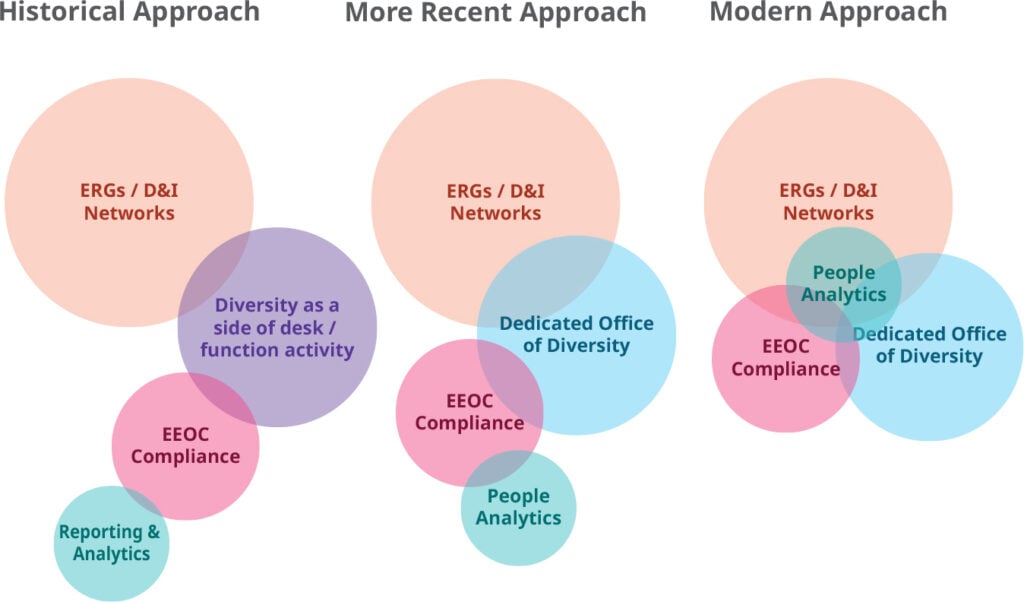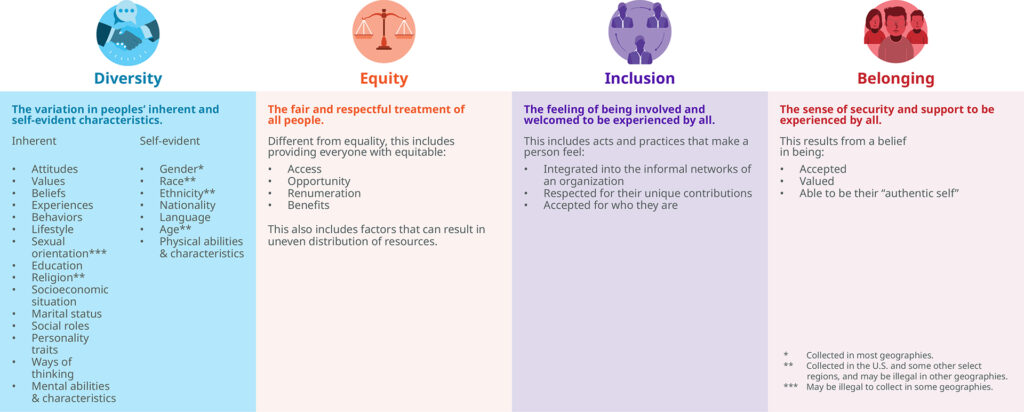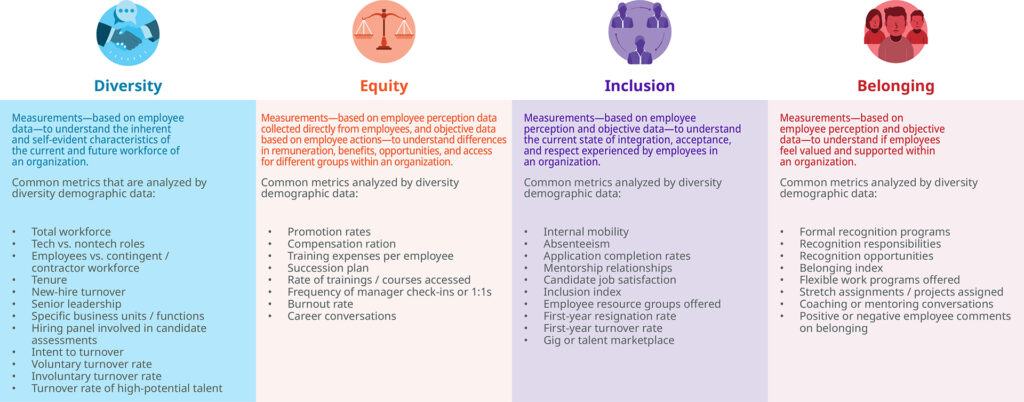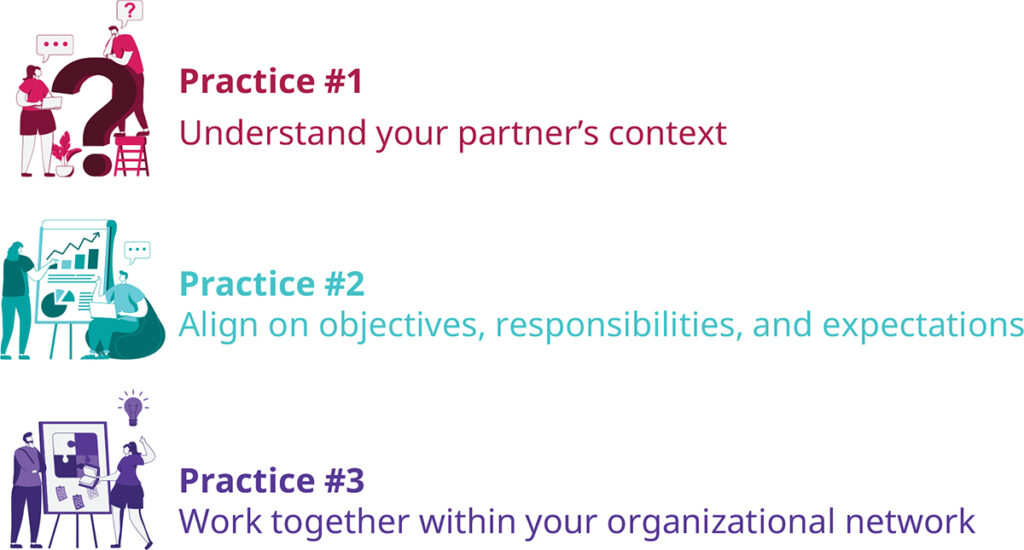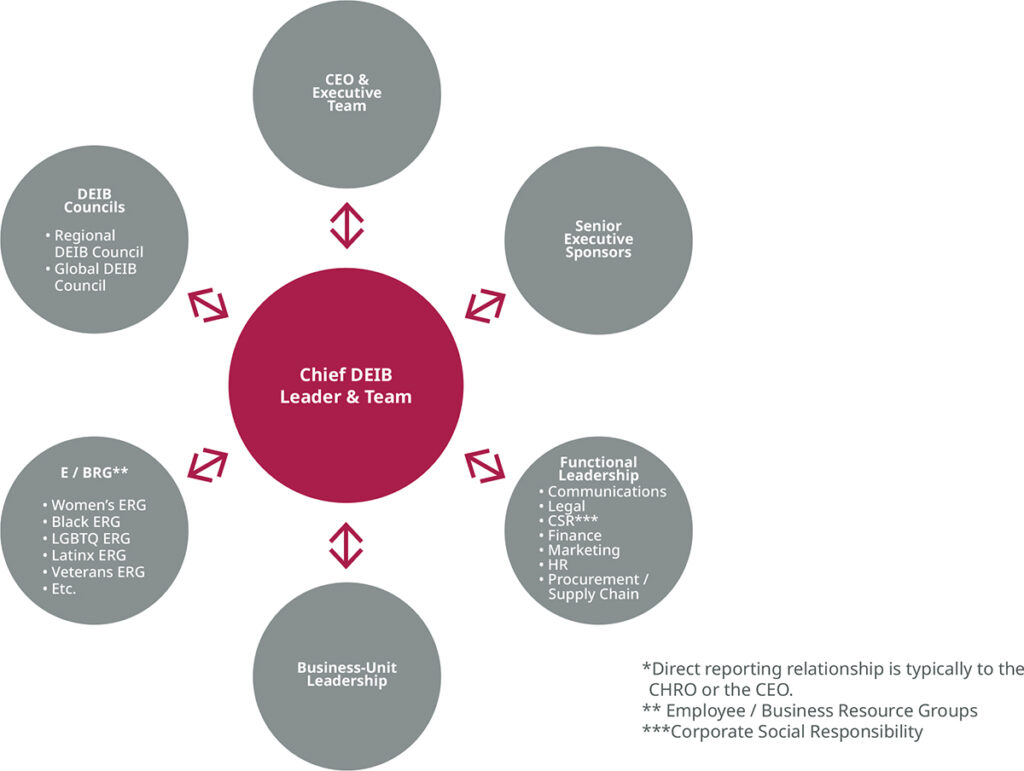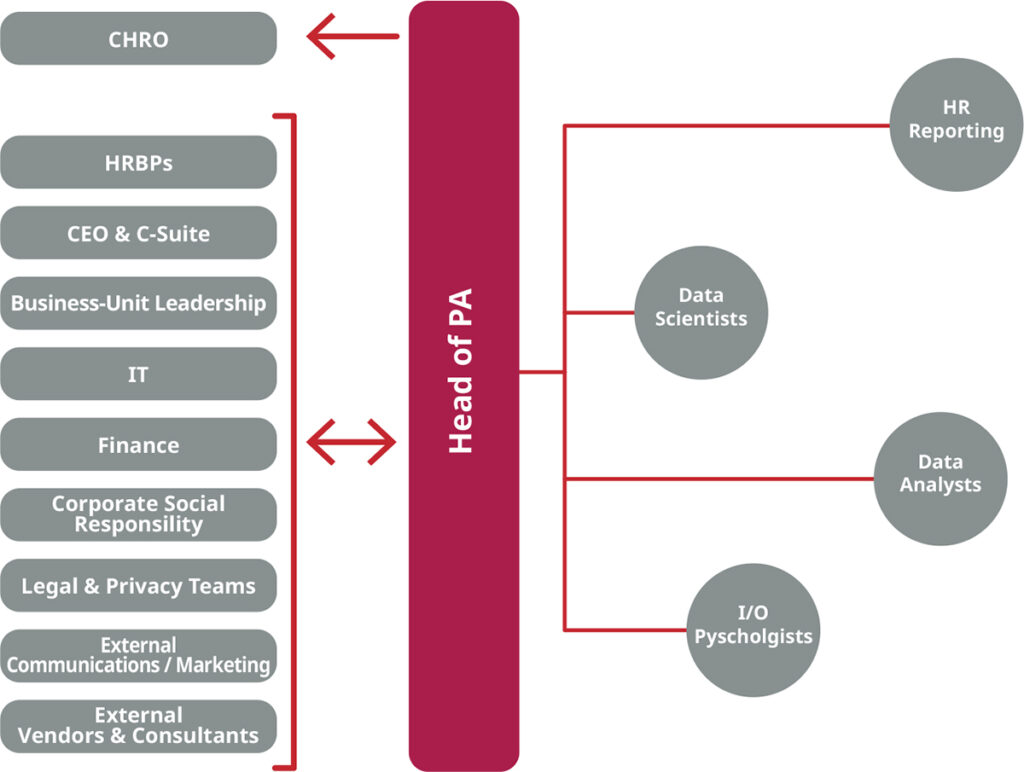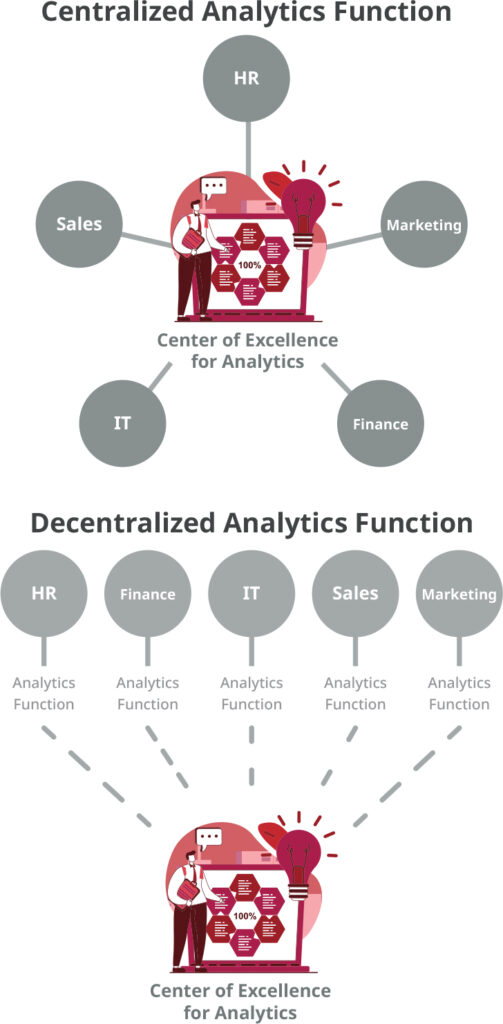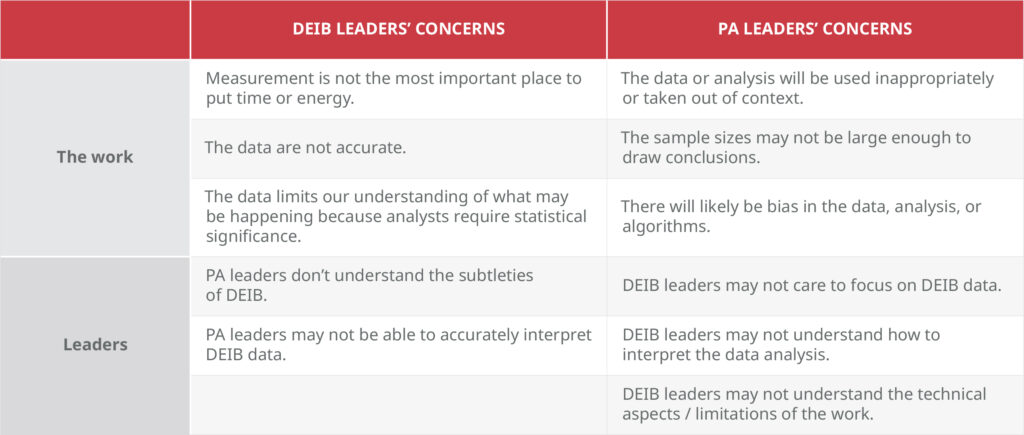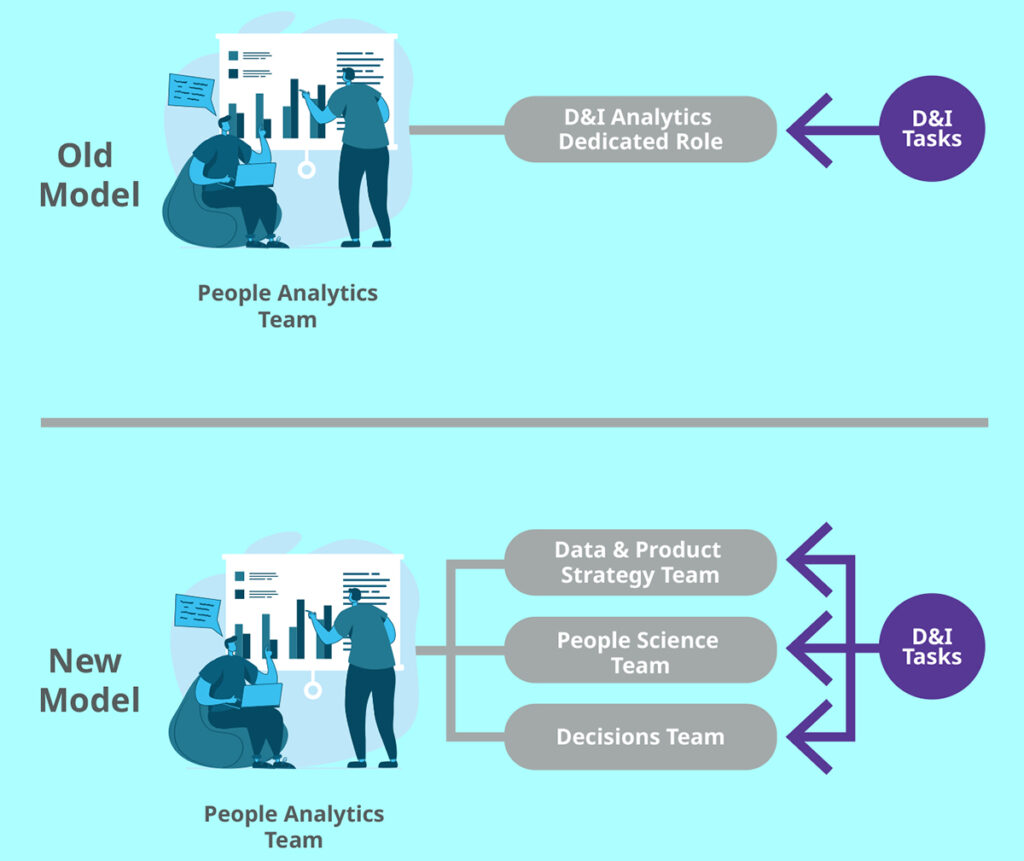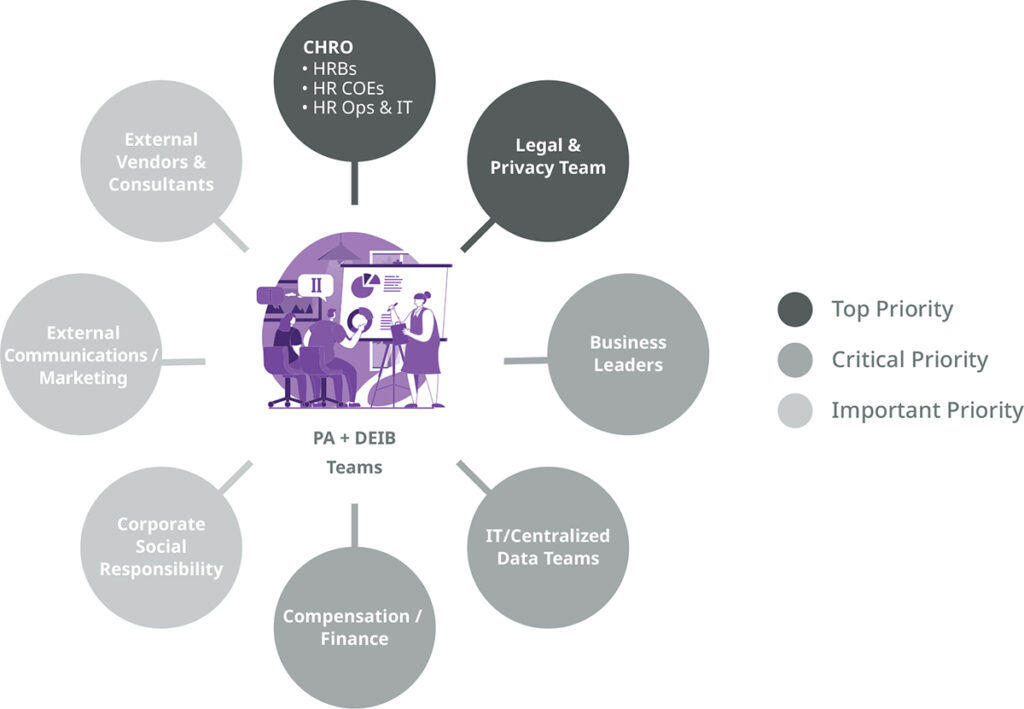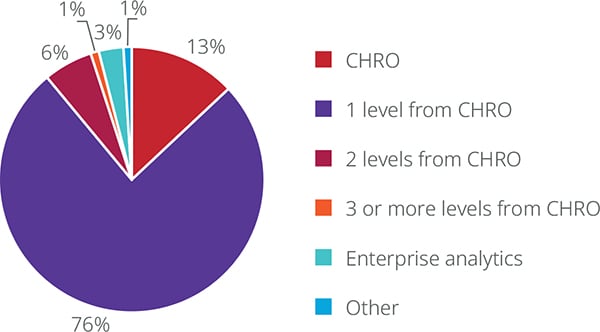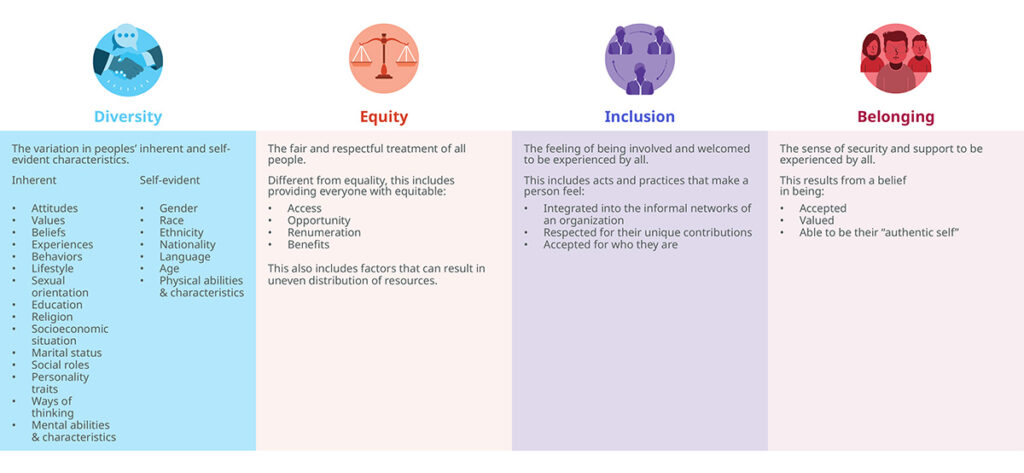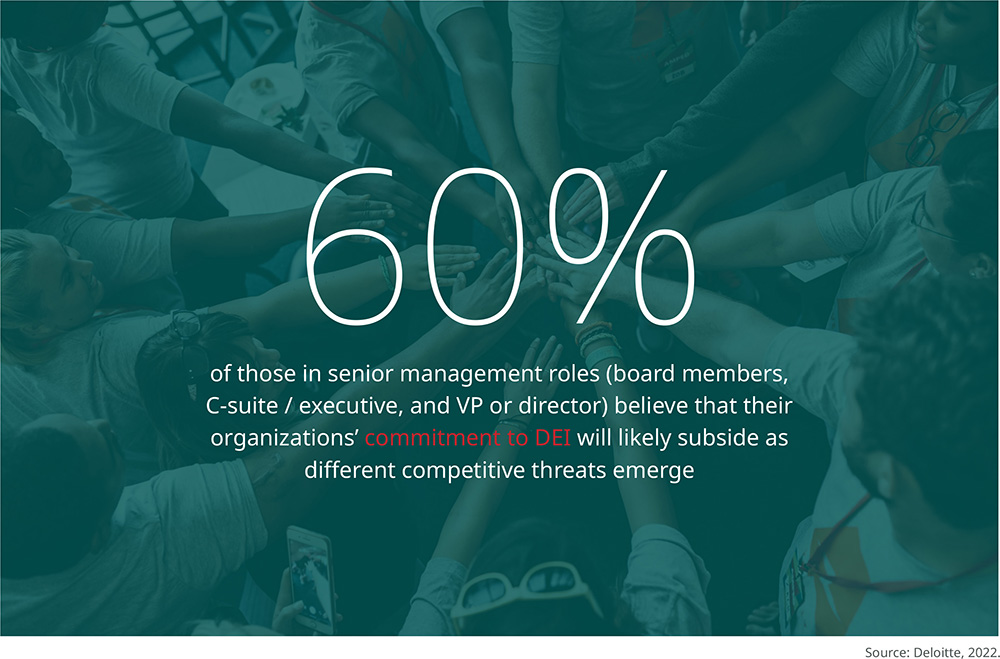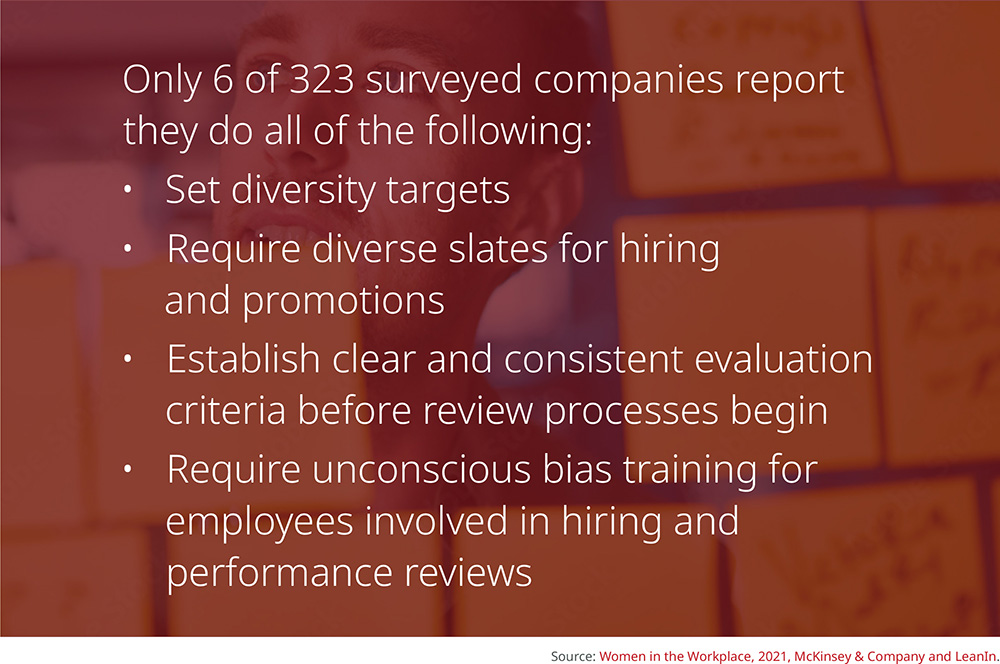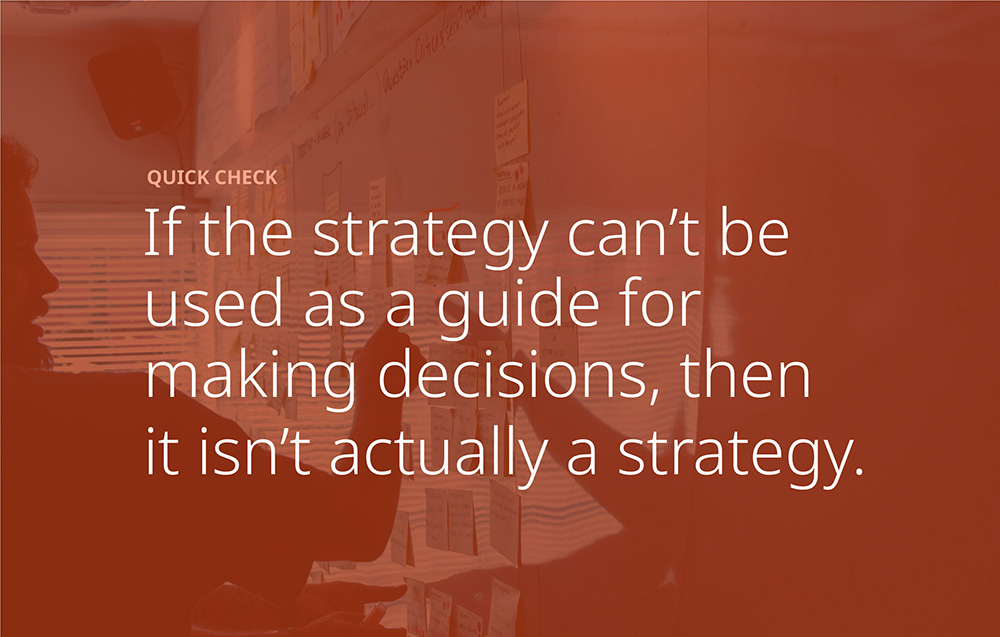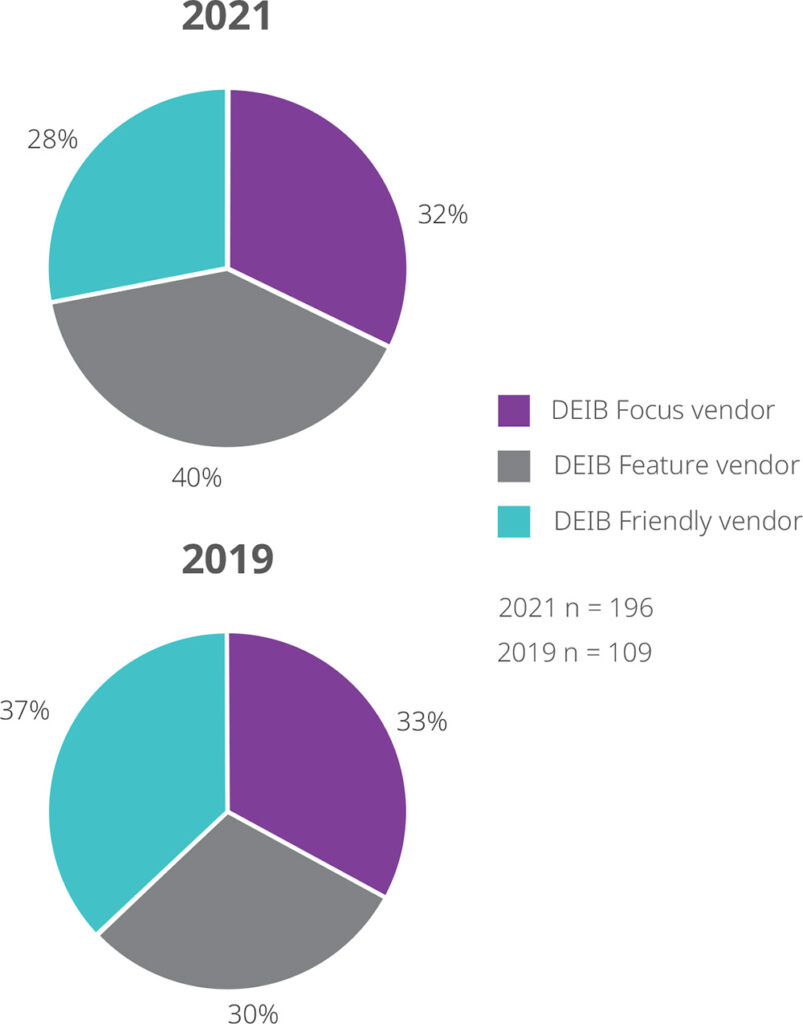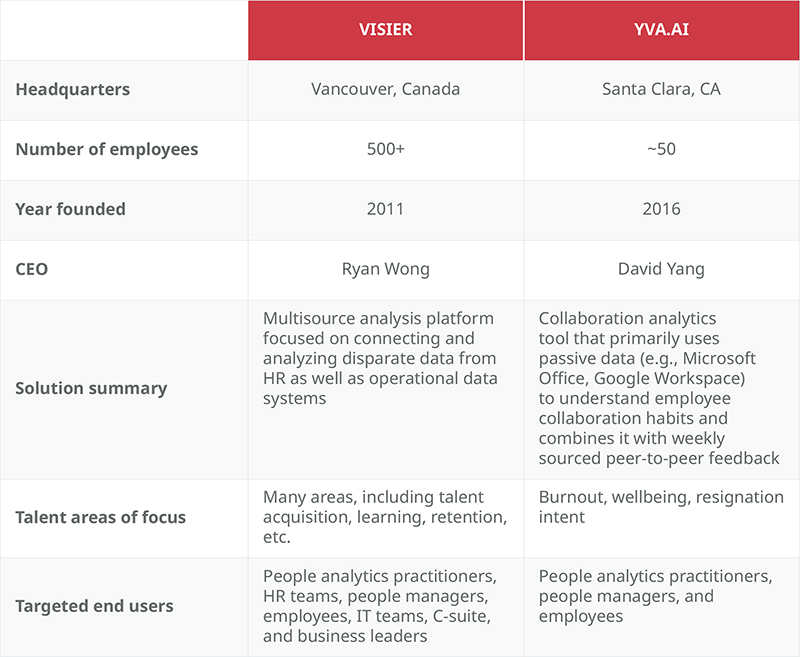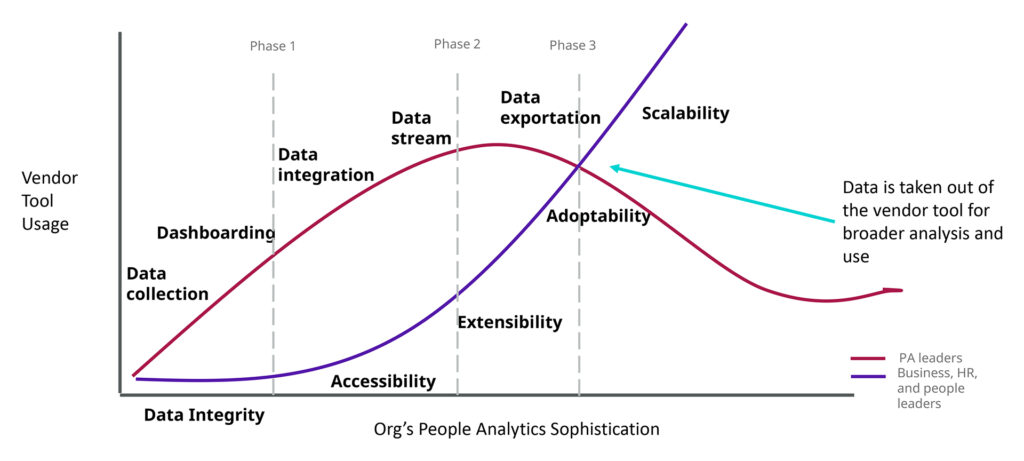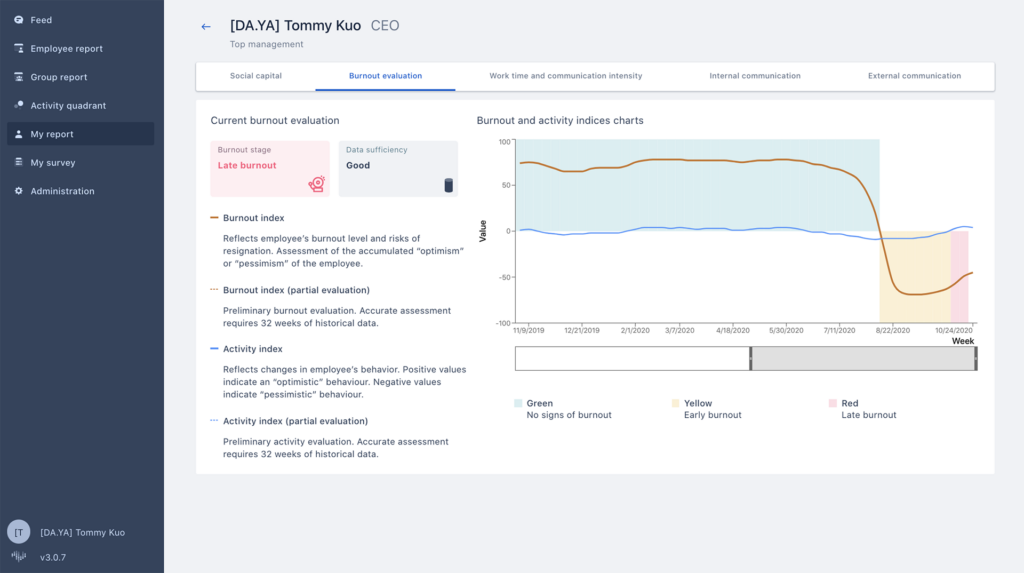Premise: Enabling the Frontline Workforce
Posted on Tuesday, January 3rd, 2023 at 1:58 PM
Why we care
In short:
The frontline workforce is vital to most organizations’ success, but they’re not being supported in the ways they need or want. Organizations need to do better. We're launching research into how organizations can enable frontline workers to thrive in their current and future roles.
In detail:
The frontline—AKA deskless—workforce is huge. A 2018 survey by VC company Emergence estimated that 80% of the global workforce is frontline, while McKinsey put the number at 70% of the US workforce. In early 2022, a Microsoft representative said the frontline workforce represents nearly 2 billion people worldwide.
And frontline workers are critical to many organizations’ success: They’re often the “tip of the spear” executing the organization’s strategies. In many industries—like retail, hospitality, healthcare, education, and transportation—frontline workers are the face of the organization to customers. They’re also an (often untapped) resource for innovation and improvement—with ideas to solve real problems they see on the ground.
Frontline workers are critical to organizations' success. But they're often underserved, under-supported, and unempowered.
But in our experience, many HR systems and processes aren’t designed with frontline workers in mind. For example, employee development opportunities are often created assuming that a worker has easy access to a computer and company email, some schedule flexibility, or the financial wherewithal to pay for learning and wait for reimbursement. That's simply not the case for many frontline workers.
In addition, there are indications that the ways organizations support frontline workers don’t align with what those workers need or want. Research by Axonify and Nudge found a mismatch between frontline workers' and corporate leaders' perceptions of what drives frontline happiness and success. BCG reported that frontline workers want more flexibility and work-life balance, better career advancement opportunities, and better pay and benefits than they’re currently provided.
Something’s wrong with this picture. Organizations need to better understand their frontline workforce's needs and adjust systems, processes, and approaches to better enable their success.
Organizations need to better understand their frontline workforce's needs and enable their success.
But that’s more easily said than done.
What challenges are organizations facing when it comes to the frontline workforce?
- Finding and keeping workers. In contrast to the late-2022 layoffs in the tech industry, the talent market in many frontline-heavy industries remains tight. For example, we’re still seeing articles (like this one from a Chicago-based PBS news outlet) about restaurants struggling to find staff. And unemployment rates across most industries are still below 2021 levels, according to the Bureau of Labor Statistics. Many employers are having trouble finding and keeping workers with the skills they need to compete in their industries.
- Providing a strong employee experience—while preparing for a downturn. In many industries, employers are competing against one another to attract workers. They're vying to provide a better organizational culture and employee experience than other prospective employers—in addition to paying higher wages. For employers facing an uncertain economic environment in 2023, it may be challenging to pay employees more, invest in culture and employee experience, and prepare for a downturn…but it looks like that’s what many companies will have to do.
- Diversity, equity, inclusion, and belonging (DEIB). DEIB efforts remain a priority—at least nominally—for many organizations. As BIPOC workers are overrepresented in the US frontline workforce (source: McKinsey), DEIB efforts can have an outsized impact on this group of people. If DEIB budgets are cut, organizations will need to find creative ways to continue to enhance equity and inclusion for frontline workers.
- Connecting frontline employees. Many frontline jobs are becoming more digitized and siloed. Retail teams, for example, may see many customers but interact little with one another. One leader told us about manufacturing workers who work whole shifts in their warehouse section without talking to anyone else. In addition, communication from leaders or central parts of the organization may be fragmented and feel unreliable. Connecting frontline workers to the organization’s purpose and one another will be a challenge for many organizations in the future.
What will we research?
Heading into this research, our primary question is:
How can organizations better enable frontline workers to thrive in their current and future roles?
More specifically, what does frontline enablement look like in the following areas? And how should enablement differ for frontline and not-frontline workers?
- Performance
- Employee development (including learning methods)
- DEIB
- Management
In terms of our going-in hypothesis, we believe:
- Organizations will need to use different approaches to enable frontline vs. not-frontline workers
- Organizations will need to adjust their systems, processes, and practices to more effectively enable frontline workers
As always, we will do this research “out loud” by opening our research process to practitioners across the community. It makes us smarter and helps everyone gather ideas from a wider pool of people.
You can participate by joining a roundtable, volunteering to be interviewed, or simply commenting on this article. Thanks in advance for your participation!
What's up in skills tech?
Posted on Monday, October 3rd, 2022 at 5:58 PM
If you're interested in skills and skills tech, this infographic summary of our latest skills tech research (full report here) is for you.
Skills tech is hot right now for good reason: It has the potential to help transform many of our longest-standing people practices, helping organizations be more responsive, agile, and flexible in ever-changing environments.
Click on the image to view more closely. And please share your thoughts and insights!
Rethinking Performance Management: Areas of Focus for a Hybrid Work Environment
Posted on Tuesday, September 20th, 2022 at 11:03 AM
In September 2022, we convened a roundtable for leaders to discuss how organizations should rethink their performance management practices within a hybrid work environment. This session was part of our ongoing study on modern performance management.
Thank you to all who participated, shared your experiences, and learned from one another!
The state of work
We started the discussion by setting a context around
- Changing employee expectations
- The struggles faced by managers
- Falling employee engagement levels
- The continuing challenges around retention and turnover
We shared our latest research on the topic, using our framework to help organizations think about performance management for a hybrid work environment—the “3C” framework.
Organizations should focus on culture, capability of managers, and connection.

Figure 1: The “3C” model for performance management in a hybrid work environment | RedThread Research, 2022
The overall discussion resulted in rich insights. To help understand how organizations should rethink performance management as they build long-term hybrid work policies, we focused on 3 areas:
- Culture: What is the role of culture in enabling employee performance in a hybrid work environment? How should organizations rethink their culture?
- Connection: What’s the role of connection between managers and employees in driving performance in a hybrid workplace? How can organizations enable such connections?
- Capability of managers: How has the role of managers changed, now that they are enabling performance in a hybrid workplace? How can organizations support managers in this role?
Key Takeaways
The roundtable generated a number of insights we thought worth highlighting. Here are our top 4 takeaways.
Understand the “Why” behind your performance management
A major theme was that leaders need to understand the purpose behind their performance management practices. Participants agreed that it was important for organizations to go back to their value proposition and be clear about what kind of organization they want to be. As one participant explained,
“Culture is where you start—not something where you add. You have to start with what culture you are enabling and what process or system you use to enable that culture. So often we do it backwards.”
Participants also discussed the powerful role culture plays in reinforcing desired behaviors and mitigating those that are not. By designing performance management practices around the culture and values important to the organization, leaders can drive employee engagement, enable constructive feedback, and provide deeper meaning and understanding of what they do.
Individuals have just as much responsibility for managing performance as managers
The role of individuals in their own performance management was a topic that came up frequently. Participants shared that managers and individuals need to be on the same page about taking equal responsibility for driving performance. As one of the participants put it,
“The age-old notion that the ownership of performance lies solely with managers needs to change.”
Individuals should also be accountable for building their connections. Participants agreed that while an organization can help identify which critical connections need to be built, individuals are responsible for building them.
Connections need to be intentional
Participants shared how connections have become integral to performance management in a remote work environment. Several of them spoke about practices that they have adopted to make connection building a part of their performance management and, as a result, part of their overall culture.
One of the participants explained,
“When we’re remote we tend to go straight to work. We need to be more intentional about how we’re spending our time and how we’re connecting.”
One of the leaders shared that their organization has created accountability maps that identify and tag the people that an individual needs to know to be successful in their role.
Technology can help build connections, but cannot be a substitute for meaningful conversations
Participants shared how they are using technology to drive opportunities for connection. For example, one of the leaders is leveraging tools to nudge people to have regular 1:1s and remind leaders if too much time has passed since they last connected with employees. Organizational network analysis was shared as an example of technology that can help organizations drive connections and uses metrics that show their impact on the business. One of the leaders explained,
“Organizations need to embrace the power of technology in helping drive connections and opportunities. With high burnout, relying on individuals to make connections can easily fall by the wayside.”
Another participant shared an example of a framework their company introduced to help managers establish trust and transparency and remove barriers that prevent employees from achieving their goals. They embedded the framework as part of existing processes through their technology, so that people don’t see it as an extra thing they need to do.
We were grateful for the open and vulnerable discussion during this roundtable. We welcome your suggestions, thoughts, and feedback at [email protected].
Road Report: ADP's 2022 Analyst Day
Posted on Wednesday, September 14th, 2022 at 12:35 PM
Late last week, I had the opportunity to spend a day with the senior leaders at ADP in their Innovation Lab in NYC. It was a flawlessly run event and I appreciated the opportunity to both listen to execs and actively participate in conversations on how to improve their products. This blog is a quick round-up of my takeaways from the event. You can also check out the Twitter thread at #adpaday.
At a high level, here are my key takeaways from the day:
- Consistent revenue growth: ADP grew 10% in revenue in FY2022 to $16.5 billion and experienced a 15% increase in new business bookings, growing $1.7 billion last year. The company is just short of 1 million clients, reporting 990,000 clients as of the end of FY22.
- Continued focus on comprehensive and unique HCM data set: A highlight of the session was ADP’s announcement of its new National Employment Report, which seeks not to be a forecast of the Bureau of Labor Statistics (BLS) report, but instead an independent estimate of employment. This report is being augmented by a 2,500 US adult worker survey of sentiment on things like engagement, connection, resilience, etc.
- Growth – though not as much as expected – in HCM platforms: ADP’s Workforce Now HCM platform for mid-market customers continues to perform well whereas its Next Gen HCM, targeted at larger, global customers, got off to a slower start than ADP hoped for, but is fully underway now.
- Increased focus on EX: Like many others in the space, ADP is focusing heavily on employee experience and engagement. They are making additional investments into their employee experience offering and launched an employee voice survey offering in July 2022.
Note: This blog was publicly available for 48 hours, after which point it became available only to RedThread members. Sign up to become a member at https://members.redthreadresearch.com.
Enabling connection at work: What can organizations do?
Posted on Tuesday, September 6th, 2022 at 4:17 PM
In September 2022, we convened a roundtable for leaders to discuss how organizations can more effectively enable connection in the workplace. This session was part of our research into connection at work.
Thank you to all who participated, shared their experiences, and learned from one another.
Why is connection important?
To frame the conversation, we discussed why connection is important—both personally for roundtable participants and for their organizations. Participants commented that connection is:
- Personally fulfilling
- A deciding factor when joining an organization
- Essential for productivity, team effectiveness, innovation, and wellbeing
- Important for strengthening culture in a hybrid environment; at the core of creating a powerful culture
- Key to learning and trust
Participants noted that loss of connection isn’t purely a pandemic problem—loneliness, disconnection, and isolation were on the rise before 2020. Rather, the pandemic exacerbated an existing trend. And as one participant put it, leaders in this roundtable were “in violent agreement” that strengthening connection in the workplace is now one of the most important challenges facing many organizations today.
This roundtable aimed to help leaders answer the question: How can organizations most effectively enable connection?
To answer this question, we discussed the roles that systems, leaders, individuals, tech, and data might play in enabling connection:
- Systems. How can existing systems and processes be used to foster connection in an organization?
- Leaders. What’s the role of senior leaders and managers in building connection? How can organizations support them in this effort?
- Individuals. What’s the role of individuals in fostering connection in the workplace? How can organizations support individuals in this effort?
- Tech & data. How can technology and data be used to foster connection in the workplace?
Key takeaways
The roundtable generated a number of insights we thought worth highlighting. Here are our top 4 takeaways.
Individuals have a responsibility to build connection
Some participants latched onto the idea that individuals have a responsibility to connect. They emphasized that this responsibility is noteworthy because, in their experience, individuals sometimes rely on others to do the connecting. One participant noted:
“One of the things that’s striking to me is that we’re saying, individuals have a responsibility.”
Another agreed:
“Reminding individuals that they actually DO have a responsibility for building connections as well, not relying on others to only connect with you.”
Participants discussed how organizations can support and enable employees in fulfilling this responsibility. The conversation turned to tools and processes that might be used to help employees connect. For example, one participant described the Accountability Partnership Maps they use in their organization to help employees understand whom to connect with:
“You put yourself in the center, and then put different roles around you. Then you ask yourself: Who do I need to connect with to be successful in my job? Which are the most important connections? Then you color code those relationships, red / yellow / green, in terms of how strong the relationship is.”
Participants noted that tools like the Accountability Partnership Map help employees understand where to focus their limited time to build connections that will help them be successful in their roles and careers.
Connection must be embedded in what’s already happening
Participants emphasized the fact that although most people agree connection is important, they’re also overwhelmed by all that’s already on their plates. Making connection one more thing they have to do is unhelpful and, frankly, unlikely to get the results that leaders or employees might hope for.
So, instead of making connection an extra program or task that managers and employees are asked to complete, some participants are embedding connection opportunities into existing processes like onboarding, career planning, and manager support resources.
Other participants have seen success making networking more intentional by associating trainings with buddy programs, peer mentoring, or actual mentoring and coaching.
Participants also noted that organizations should implement processes that encourage connection, but at least some of these must make space for organic, informal connections. Connections can’t all be formal, and they certainly shouldn’t feel forced. As one participant wrote:
“The moment is forced, it drives disconnection.”
Finally, participants pointed out that connection opportunities should happen inside whatever technologies employees are already working in—not in separate systems.
Leaders set the tone
If individuals have a responsibility to connect, leaders have an outsized influence on whether and how connection happens in an organization. The ways that leaders connect with each other and with their reports will trickle down to the rest of the organization—behaviors cascade down.
Leaders, therefore, have a responsibility to role model connection. They set the stage and expectations for how others connect. One participant wrote that leaders can:
“Create space for connection, model connection, invest in experiences and opportunities, encourage connection in creative ways, understand the importance of and build in every day micro-moments to create opportunities, understand that connection looks different for different people.”
Some participants noted that in order to role model and set the tone in the right way, leaders need to feel connected themselves.
Others pointed out that although these behaviors may come naturally to some leaders, others need practice and support—and might be embarrassed or afraid to ask for help. Organizations can support leaders in role modeling expected behaviors by providing tools, best practices, and guidance. Guidance might look like:
- Talk tracks for 1 to 1 conversations with reports
- Regular nudges on why it’s important for managers to connect
- Recognition of leaders who role model connection
- Senior leaders telling stories about how they build connection, when they’ve made mistakes around connection and what they learned
- Helping leaders understand the biases they may have about whom to connect with and how to connect with different types of people
- Providing tools and tech that make it easy to connect, especially remotely
Participants noted that in order for leaders to forge relationships, they need time:
“You can't microwave a relationship – it takes time.”
Participants noted that leaders must be given permission, support, and time to build meaningful connections.
Connection shouldn’t be left to chance
Participants discussed the fact that pre-pandemic, many connections were developed organically. Relationship-building chats could happen in the break room, at the water cooler, in the hallway, or just before or after meetings.
Now, participants claimed, organic opportunities for connection are much rarer. So they must be intentionally built into the ways people work these days. One participant wrote in the chat:
“In remote work, individuals need to be far more intentional about pursuing connection. It used to occur more passively / organically, but I'm seeing less of that now.”
Some participants suggested that tech and data can be used to enable connection more intentionally. Perhaps most obviously, tech enables asynchronous communication and collaboration, which helps with some kinds of connection. One participant shared the example that in their organization, some employees are using virtual coworking spaces, where people are working together but aren’t located in the same place. This can create a sense of connection and community while enabling people to work remotely.
As another example, tech can match employees for any number of things—coffee chats, mentoring, projects / gigs, etc.—at a scale that would be difficult to manage manually.
Others in the discussion noted that having data about who’s engaged, who’s connected with whom, how healthy teams are, and so on can help leaders be targeted in their efforts to enable people to connect.
We were grateful for the open and vulnerable discussion during this roundtable. We welcome your suggestions, thoughts, and feedback at [email protected].
5 Themes in the Literature on Connection at Work
Posted on Tuesday, August 23rd, 2022 at 4:56 AM
Many organizations are experiencing a connection crisis spurred by the COVID-19 pandemic. As ways of working changed in the course of the pandemic, employees lost connection with one another and their organizations. Employees and organizations recognize that's not a good thing: Loss of connection has consequences for employee engagement and well-being as well as organizational performance.
That's why we're researching connection in the workplace. We want to know how organizations can foster connections that will help them thrive.
As part of this research, we reviewed over 50 academic and business articles, reports, and books. We wanted to understand the state of the current conversation so that our research can contribute as helpfully and thoughtfully as possible. This short article summarizes what we found, including
- 5 major themes from the literature
- 5 critical articles we think you should explore
- A complete list of the articles we reviewed
Major themes
5 themes emerged from the literature on connection at work. Each is discussed below, with links to articles that support the overarching theme.
Connection is a big deal
The literature we looked at generally agreed that connection is important for employees and organizations alike. A few striking data points to support this finding:
- Employee recognition firm O.C. Tanner reported that weekly one-to-one meetings with managers during uncertain times (like the COVID-19 pandemic) lead to a 54% increase in engagement, a 31% increase in productivity, a 15% decrease in burnout, and a 16% decrease in depression among employees.
- WorkHuman’s research associated connection with a greater sense of purpose, more collaboration, and decreased turnover intention.
- McKinsey & Company found that employees who feel more connected with colleagues are 1.5x more likely to report both engagement and a sense of belonging at work.
- According to BetterUp’s 2022 Insights Report, highly connected employees experience 34% higher goal attainment, a 36% boost in well-being, and 92% more professional growth.
These stats give color and detail to the overall sense we got from the literature, which was: connection is associated with things like more innovation and creativity, a culture of inclusion and belonging, higher employee engagement, less burnout, lower turnover intention, and higher productivity. The literature agrees that connection is good for employees, and it’s good for business.
Loss of connection isn’t just a pandemic problem—but the pandemic made it worse
Even before the pandemic started, there was a body of literature reporting an increase in disconnection and loneliness at work and assessing its consequences. Back in 2019, Karyn Twaronite and the EY Belonging Barometer team found that 40% of people felt isolated at work. In early 2020, Cigna reported that 62% of US workers could be considered lonely, at an estimated cost to the US economy of over $406 billion a year. And just before the pandemic began, researchers Hadley and Mortensen revealed that 76% of workers said they had difficulty connecting with their teammates, and 58% agreed with the statement “My social relationships are superficial at work.”
As with many other areas of work, the pandemic accelerated an existing trend: It made the connection crisis much worse. The literature points out 2 primary reasons for this accelerated loss of connection:
- As employees adjusted to the pandemic, they “turtled up,” as researchers King and Kovacs put it. That is, employees maintained and even strengthened ties with close colleagues, while letting their weaker connections to acquaintances wither.
- Lost connections weren’t replaced by new ones. It’s natural for some connections to fade over time. But the pandemic didn’t allow them to be replaced as they normally would be.
As a result of these lost connections, one study by Buffer found, 52% of people feel less connected to their coworkers since shifting to remote work.
Connection isn’t just one-to-one
Heading into this lit review, we expected the literature to cover interpersonal (one-to-one) relationships more heavily than other types of connection. That’s not what we found. The literature covered a wide range of types of connection, including:
- One-to-one: Relationships between 2 people
- One-to-many: Relationships between 1 person and a group of people
- One-to-organization: An employee’s sense that they belong in the organization and that they’re part of a community
- One-to-work: An employee’s sense of connection to, and meaning in, their own work
- Team-to-team: The relationships between teams in an organization
We were particularly intrigued by the explicit links made in the literature between connection, purpose, community, and belonging. For example, the Center for Equity, Gender & Leadership at Berkeley’s Haas School of Business emphasized that fostering different types of connection can strengthen employees’ sense of belonging and inclusion. McKinsey & Company’s Great Attrition research linked connection to employees’ sense that they’re part of a community. And researchers Blount and Leinwand noted that to accomplish their purpose, organizations must foster silo-breaking connections. Other articles also mentioned that alignment between individual and organizational purpose can strengthen employees’ sense of connection to the organization.
Strengthening connection is everyone’s responsibility
The literature contains a mix of advice for senior leaders, managers, HR leaders, and individual employees. Our interpretation of this mix is that the literature is telling us that everyone in an organization plays a part in, or has a responsibility for, building connection in different ways.
Many articles claimed that fostering connection is one of a manager’s or leader’s primary responsibilities, with motivational speaker John Hall emphasizing that building connections should be at the top of any leader’s priority list. Other articles proposed ways for HR leaders to implement systems and processes to enable connection. A blog by Lumapps, for example, advised HR leaders to create peer mentorship programs, set up communities of practice, and host regular social events.
A smaller, though still noticeable, number of articles were primarily directed at individuals. These articles dispensed advice on networking and forging one-to-one or one-to-many connections, since these connections are within an individual employee’s locus of control.
Connection must be strengthened intentionally
The literature emphasized that, particularly in a hybrid work setting, connections are not going to strengthen themselves. Several articles noted that leaders, managers, and employees must thoughtfully and intentionally put in place processes and systems to foster meaningful (not superficial) relationships.
For example, one article by writer Gwen Moran suggested that organizations start building connection at employee onboarding. A few mentioned the importance of documentation and communication—consistently taking and disseminating meeting notes, sharing detailed rationales for decisions, and setting explicit norms and expectations—to connect employees to what’s going on in the organization.
A final aspect of intentionality in the literature had to do with time. Some articles noted that building meaningful relationships takes time, and many of the interactions that employees have today are transactional or superficial. These articles advised leaders and employees to set aside time to nurture deep, human connections. For example, one article by organizational psychologist Juliette Holt-Lunstad argued that employers need to go beyond simply increasing opportunities for interaction and instead take steps to foster high-quality interactions that build high-quality relationships.
5 articles you should explore
Of the literature we reviewed, several pieces stood out. Each of the articles below contains information that we found useful or intriguing. We learned from their perspectives and encourage you to do the same.
“Network effects: How to rebuild social capital and improve corporate performance”
T. Lauricella, J. Parsons, B. Schaninger, and B. Weddle.
“It’s imperative… that business leaders manage social capital in the same way they manage financial, human, and other forms of corporate capital: systematically and intentionally.
This data-rich article advises leaders to interrogate the systems of social capital in their organization through 3 lenses: motivation, access, and ability. Are employees motivated to build and maintain relationships? Do they have access to the right relationships? And do they have the ability to build those relationships?
“What a year of WFH has done to our relationships at work”
N. Baym, J. Larson, and R. Martin.
"Those who said their interactions with colleagues have decreased this year were less likely to be thriving at things that lead to innovation, like thinking strategically, collaborating or brainstorming with others, and proposing innovative ideas.”
The authors describe how interpersonal connections, especially the types of relationships enabled through chance in-person encounters in the office, were lost in the first year of the pandemic. Managers are key to helping rebuild them.
"Hybrid work: Getting leaders to stay connected with teams"
M. Arena
“As the pandemic lingered, we noticed a decrease in both bonding connections and bridging connections.”
The author explains there are 2 types of connection: bonding connections, which typically occur within a team, and bridging connections, which connect individuals across different teams. Both types of connection were lost during the pandemic, but bridging connections were particularly hard-hit.
“Two years into COVID: The state of human connection at work”
WorkHuman
"The more recently someone has been thanked by a manager and / or peer, the greater their sense of connection to the company culture and their colleagues.”
This report offers tons of data and stats about how connection has been lost during the pandemic, and points to 4 ways to build connection: asking for feedback, communicating values, being human (demonstrating vulnerability), and saying "thank you."
“Are your team members lonely?”
N. Hadley and M. Mortensen
“Working remotely instead of face-to-face can by itself undermine social connections. But that is not the whole story, so resuming in-person work won’t fix the loneliness problem.”
This article reports results from 2 studies, one of which collected data before the pandemic began. The authors argue that face-to-face interactions (i.e., returning to pre-COVID ways of working) will not entirely solve the connection crisis. They make a case for fundamentally redesigning teams to foster meaningful connections.
Complete list of sources
Sources are listed in reverse chronological order.
- “Network effects: How to rebuild social capital and improve corporate performance”, Lauricella, J. Parsons, B. Schaninger, and B. Weddle, McKinsey & Company, August 2022.
- “22% of people don’t have any friends at work. Here’s how to change that”, Moran, Fastcompany.com, July 2022.
- “The 5 things Gen Z is looking for in a job and career”, Fung and A. Yum, entrepreneur.com, July 2022.
- “The magic of your first work friends”, Goldberg, The New York Times, July 2022.
- Advancing belonging in organizations: An equity fluent leadership playbook, Smith, J. Sanders, and I. Rustagi, Berkeley Haas EGAL, June 2022.
- “Employee engagement and resignation: You need a virtual watercooler”, G. Giacomelli, com, June 2022.
- “How virtual work is accelerating innovation”, Berruti, G. Ho, P. Kirschner, A. Morris, S. Norman, and E. Roth, McKinsey & Company, June 2022.
- “Hybrid work: Getting leaders to stay connected with teams”, M. Arena, com, June 2022.
- “Don’t want to lose your Gen Z and millennial talent? Here’s what you can do”, Parmelee, Deloitte, May 2022.
- “Maintaining network connections”, Gratton, Strategy & Business.com, May 2022.
- “Purpose at work predicts if employees will stay or quit their jobs”, Amire, greatplacetowork.com, May 2022.
- “6 tips for creating strong work connections in a hybrid office, according to an expert”, J. Liu, CNBC Make It, April 2022.
- “Do we still need teams?”, Noonan Hadley and M. Mortensen, Harvard Business Review, April 2022.
- “Managers can’t do it all”, Gherson and L. Gratton, Harvard Business Review, March-April 2022.
- “Two years into COVID: The state of human connection at work”, workhuman IQ, March 2022.
- “We need to talk about why so many people are lonely”, Moran, Fastcompany.com, February 2022.
- “14 ways to foster connection between employees”, Forbes Council Members, com, January 2022.
- “How leaders can build connection in a disconnected workplace”, Poswolsky, Harvard Business Review, January 2022.
- “The neighborhood effect: Implications of hybrid work”, Arena, HRExchangeNetwork.com, January 2022.
- Connectable: How leaders can move teams from isolated to all in, Jenkins and S. Van Cohen, McGraw Hill, 2022.
- Rewired: Protecting your brain in the digital age, D. Marci, Harvard University Press, 2022.
- “The connection crisis: Why community matters in the new world of work”, BetterUp Insights Report 2022.
- “2022 state of Remote Work”, Buffer, 2022.
- Rise of the relatable organization, Mercer Global Talent Trends 2022 Study, 2022.
- “15 tips to create meaningful relationships at work”, Sestric, gobankingrates.com, November 2021.
- “4 tips for being a ‘connected leader’”, Coultas, Trainingmag.com, October 2021.
- “‘Great attrition’ or ‘great attraction’? The choice is yours”, A. De Smet, B. Dowling, M. Mugayar-Baldocchi, and B. Schaninger, McKinsey & Company, September 2021.
- “Why workplace connection matters”, McClure, WorkHuman.com, Sept 2021.
- “How to keep remote workers from feeling disconnected”, Somers, MIT Sloan, July 2021.
- “The worker-employer relationship disrupted: If we’re not a family, what are we?”, Schwartz, K. Eaton, D. Mallon, Y. Van Durme, M. Mauptmann, S. Poynton, and N. Scoble-Williams, Deloitte, July 2021.
- “How to be a leader who connects with others”, Hall, Forbes.com, June 2021.
- “Help your employees find purpose—or watch them leave”, Dhingra, A. Samo, B. Schaninger, and M. Schrimper, McKinsey & Company, April 2021.
- “What a year of WFH has done to our relationships at work”, Baym, J. Larson, and R. Martin, Harvard Business Review, March 2021.
- "Research: We’re losing touch with our networks”, King and B. Kovacs, Harvard Business Review, February 2021.
- Digital body language: How to build trust and connection, no matter the distance, Dhawan, St. Martin's Press, 2021.
- “12 effective ways to create a more connected workplace”, Herman, Lumapps, December 2020.
- “Are your team members lonely?”, N. Hadley and M. Mortensen, MIT Sloan Management Review, December 2020.
- “How the coronavirus outbreak has – and hasn’t – changed the way Americans work”, Parker, J. Menasce Horowitz, and R. Minkin, Pew Research Center, December 2020.
- “8 tips for leaders to increase connection in their teams (Part 3)”,-C. Ross, October 2020. “Employees need to feel connected: Leaders have to be human”, S. Taherian, Forbes.com, June 2020.
- Loneliness and its impact on the American workplace, Cigna 2020 Loneliness Index Executive Summary, March 2020.
- “Only 28% of employees say they feel connected to their company’s purpose”, Schroeder, hrmorning.com, February 2020.
- “The Value of Belonging at Work”, W. Carr, A. Reece, G. Rosen Kellerman, and A. Robichaux, Harvard Business Review, December 2019.
- “Why are we here?”, Blount and P. Leinwand, Harvard Business Review, November-December 2019.
- “Building relationships at work: Why it matters”, Ryba, Quantum Workplace, June 2019.
- “The surprising power of simply asking coworkers how they’re doing”, Twaronite, Harvard Business Review, February 2019.
- “6 ways to increase social connection at work”, Sellwood, LinkedIn.com, July 2018.
- “Fostering social connection in the workplace”, Holt-Lunstad, American Journal of Health Promotion, June 2018.
- “A manager’s guide to helping teams face down uncertainty, burnout and perfectionism”, Fosslien, First Round Review, undated.
- “5 questions on the minds of hybrid managers,” Microsoft WorkLab, undated.
- “10 ways to connect people in your workplace”, Attfield, Jostle.com, undated.
- “5 ways to form real human connection at work”, Career Contessa, undated.
- “Traditional leadership is dying: Here’s what HR can do to help”,C. Tanner white paper, undated.
Building a DEIB–Analytics Partnership: What DEIB & PA Teams Should Know to Partner Effectively
Posted on Tuesday, August 16th, 2022 at 6:00 AM
Download This Research[/button]
Understanding the need for a DEIB–PA partnership
Why focus on the partnership between DEIB and people analytics (PA) leaders?
In the summer and fall of 2020, companies made big promises to improve diversity, equity, inclusion, and belonging (DEIB) in their organizations. At the time, one of our first questions was how organizations would show the progress made on those commitments. While DEIB metrics—measurements designed to understand DEIB—are the obvious answer, how to select, collect, use, and maintain those metrics isn’t so clear.
Thus, our research initiative on DEIB metrics and analytics was born. The first article in this series, “DEIB Analytics: A Guide to Why & How to Get Started,” provides leaders with a plan for how to begin using DEIB metrics and analytics. The second article, “DEIB Metrics: An Essential Guide,” provides definitions of what DEIB metrics are and how they can be used.
This third article in the series focuses on how DEIB and people analytics leaders should partner to identify, measure, maintain, and distribute those DEIB metrics.
Why write an article on this DEIB–PA partnership? For several reasons. As shown in Figure 1, the way that DEIB and PA leaders partner (or not, as in the early days) has changed substantially. PA is increasingly at the center of DEIB metrics efforts as organizations ensure that they have consistent data sets, analysis approaches, and contexts across the board. However, PA leaders shouldn’t do this work without the support of DEIB leaders—since DEIB brings an essential level of theory, nuance, and context to the data. By DEIB and PA leaders partnering, you can clearly and consistently:
- Define terms
- Identify consistent data sources and analysis approaches
- Appropriately interpret data
- Develop targeted and appropriate action steps
- Create ongoing accountability
The combined expertise of DEIB and PA leaders enables you to make all these things happen.
“People Analytics leaders can help answer questions that DEIB leaders didn’t even know how to ask.”
—Hallie Bregman, Owner, The Bregman Group
PA is increasingly central to organizations' DEIB metrics efforts
Despite challenges, there is a known path to partnership
While you should (in theory) collaborate, it doesn’t always seem intuitive for PA and DEIB leaders to work together in practice. Why is this?
- First, many DEIB and PA leaders have historically come from different perspectives, such as social justice for the former, and math or statistics for the latter.
- Second, your individual responsibilities often have very different. Many DEIB leaders, for example, are charged with creating community and connection—and taking a data-driven approach may not be prominent on your radar. By contrast, PA leaders primarily focus on data and measurement; your only experience with DEIB may be through their participation in DEIB-related initiatives.
- Third, your reporting relationships are often very This can result in a poor alignment of priorities and little insight into each other’s work, especially if either DEIB or PA is outside the HR reporting structure.
- Finally, the data used by DEIB in the past hasn’t necessarily been the same as that used by PA—making it more difficult to create alignment on even simple reporting.
All of this culminates in the challenges outlined in Figure 2.
A look at the causes and effects of challenges to DEIB analytics work due to differences between PA and DEIB leaders
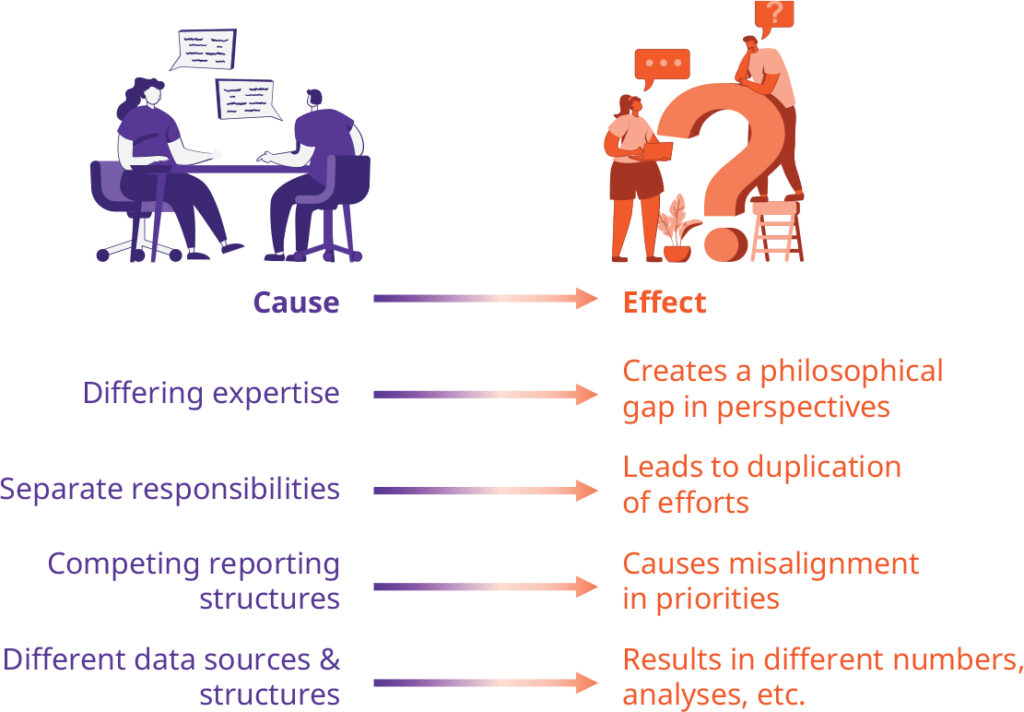
Figure 2: Differences between DEIB and PA leaders can impact the work | Source: RedThread Research, 2022.
Yet, our interviews revealed that common approaches could enable a strong DEIB / PA relationship to develop and thrive.
This article is designed to help DEIB and PA leaders better understand each other—and create a partnership that will enable you to succeed. We identify 3 components of an effective partnership in this article, outline the responsibilities of DEIB and PA leaders and provide specific examples of how to make this relationship more effective. We also provide a series of exhaustive checklists in the appendix to help you get started.
As always, our research is designed to accelerate good ideas within the people management field. Some of the concepts in this article may fit your organization’s unique circumstances, while others may not. Even better, some of these ideas may inspire new insights and approaches.
Whatever your reaction to the work, we’d love to hear about it. Please feel free to reach out to us at [email protected] with any insights, questions, or feedback.
“One of the biggest challenges to a successful DEIB and people analytics partnership is that most DEIB leaders don’t have technical backgrounds. As a result, there is a disconnect between diversity leaders and people analytics leaders.”
—Sean Fay, Co-Founder, The Context Factory
What is DEIB?
Before we dive into the heart of this paper, let’s start by defining what we mean when we say diversity, equity, inclusion, and belonging (see Figure 3). Everyone in your organization should be on the same page when it comes to understanding DEIB—which starts with a single, common set of definitions.
What are DEIB metrics?
Building on the information on the previous page, defining what we mean when referring to DEIB metrics is essential. Figure 4 provides specific definitions for, as well as examples of, metrics for each DEIB area. Everyone in your organization should be on the same page when it comes to understanding DEIB. After introducing a single, common sets of definitions for DEIB, you then need to define and differentiate the metrics for each of the 4 aspects of DEIB.
Building a DEIB—PA partnership
3 practices for building a DEIB–PA partnership
Our interviews with DEIB and PA leaders revealed several things they’re doing to build a successful partnership. We grouped our findings under 3 broad practices, with specific areas that leaders should consider when developing the partnership (see Figure 5).
- Understand your partner’s context. When starting a new relationship, you must understand how the other team operates. This involves becoming familiar with each other’s reporting and governance structures; specific concerns; priorities; and, responsibilities.\
- Form a DEIB–analytics partnership by aligning your objectives, responsibilities, and expectations. A partnership built on clarity around who is responsible for what, along with the overall goals, allows you to achieve greater alignment. This becomes easier with both of you supporting each other in your work, as well as among your teams and throughout the organization as a whole.
- Work together effectively within your organizational network. A successful DEIB–PA partnership is also a result of you both working together with other functions, teams, and leaders within the organization. Remember: You need to be strategic and tactical in building relationships with IT, business leaders, marketing, finance, and other functions to help ensure the success of your work and your partnership.
3 practices for DEIB and PA leaders to adopt to build a successful DEIB-PA partnership
Practice #1: Understanding your partner’s context
DEIB leader’s context: A primer
Before beginning any partnership, you must understand your partner’s circumstances. Let’s start with the DEIB leader’s context.
To start, you need to have a good understanding of the environments in which your DEIB leader works. For example, DEIB leaders typically have up to 5 different stakeholders: employees, customers, suppliers, communities, and shareholders.
Further, in many global organizations, DEIB leaders operate within a complex and demanding governance structure, an example of which is shown in Figure 6. All of these different groups require time with your DEIB leader and their teams. Note: HR—where PA teams often report—is just one of many constituents.
To help you understand your DEIB partner’s context, you should ask them the following:
- To what extent is working with DEIB your full-time or part-time responsibility?
- How big is the DEIB team?
- To whom do you report? How strong is that relationship? What other reporting relationships exist?
- What other resources (e.g., budget, indirect reports, external resources) do you have?
- What experience do you have in collaborating with PA teams on DEIB data?
DEIB leaders operate within a complex and demanding governance structure
PA leader’s context: A primer
Similar to DEIB, PA leaders also work in complicated situations.
As shown in Figure 7, PA leaders interface with various organizational stakeholders, while managing a team of technical experts. Their organizations also tend to have different governance structures (see Figure 8), impacting how they will work with DEIB.
To help you understand your PA partner’s context, you should ask them the following:
- To whom do you report? What other reporting relationships exist?
- What types of services and support does your team offer?
- How is your team structured? What are the types of expertise of the people within that team?
- How long has your team been doing their work?
- What other resources (e.g., budget, indirect reports, external resources) do you have?
- What experience do you have in collaborating with DEIB leaders on DEIB data?
“Our DEI group has great people, but I just don’t know if they are doing what we need right now and don’t know that they even have the skill set to do it. I don’t know how numbers-focused they are or how numbers-focused they should be. Right now, our DEI team is more like project management, focusing on things like benefits. They handle a lot of other stuff versus looking at data.”
—Global people analytics leader, international consumer packaged goods company
PA leaders interface with several organizational stakeholders while managing a team of external technical experts
Organizations often have one of these two types of governance structures for PA—impacting how PA and DEIB interact
“The combination of qualitative and quantitative data is ideal, but at the end of the day there is nothing that data will tell us that we don’t already know as Black people. I know what my experience was as an African-American man who worked for 16 years in roles that weren’t related to improving diversity. It’s as much heart as head in this work.”
Appreciate each other’s concerns
It’s one thing to understand each other’s contexts—but it’s another entirely to appreciate your partner’s concerns about working together.
Given the different silos DEIB and PA leaders often work within, it’s easy not to understand your partner and where they’re coming from. Based on our research, we’ve identified some common concerns each can have about the other (see Figure 9).
Be aware: This is a prime opportunity for you to lean in and address those concerns directly with your partner.
In some instances, it can require creating specific protocols or practices to address the concern, such as a standard expectation that new analysis will be reviewed by both partners. In other instances, it may need both groups to engage in certain situations together, such as when interpreting results with a senior HR business partner.
Some of these concerns will likely be addressed when you and your partner align on goals and objectives (we discuss this next). For other concerns, you both may need to acknowledge these exist, and then decide to address them on a case-by-case basis.
Some of the top concerns we heard from DEIB and PA leaders alike were regarding the work, as well as each other
Real-World Threads
Understanding your partner
One of the keys to building a good partnership is understanding the context within which your partner operates.
According to a PA leader we interviewed: PA leaders need to be aware that most DEIB leaders don’t have analytical training. Similarly, PA leaders often don’t understand the nuances and challenges associated with DEIB work. He recommends DEIB leaders be wary that the work can become all about the data—losing sight of the ultimate goal to drive DEIB—a potential danger if there’s no shared vision or established foundation for working together.
“ A lot of that came down to communications and getting clear on priorities and responsibilities.”
—PA Director, a global technology company
A similar sentiment was echoed by the global head of PA at a large tech company, according to whom the entire relationship boils down to communication. One of the things he did when he joined the company as PA Director was to identify why the existing partnership between the PA and D&I teams wasn’t working successfully. This was followed by trying to understand the goals they were trying to achieve together. Ultimately, the teams worked on:
- Gaining clarity around priorities
- Obtaining the help they needed to drive those priorities
- Defining the specific responsibilities on both sides
“The biggest challenge to building a partnership between PA and DEIB is understanding what you expect from the partnership. A lot of DEIB leaders call on PA when something is broken or needs to be explained to the senior leadership. PA needs to build on this dependency and get to a point where we are able to work together from the start.”
—Manager of PA & HR M&A, global logistics company
Some DEIB leaders, for their part, are often worried that the drive for statistical precision may overcome the intuition side of DEIB. Some of these leaders expressed concern that people in underrepresented populations might understate or purposely inflate information provided to focus groups because the level of trust is too low. In those instances, the data aren’t very helpful.
“Analysts must challenge the traditional minimum confident n, pushing themselves to look beyond the limited hard data. They don’t have to prove that the difference in performance ratings between blacks and whites is “statistically significant” to help managers understand the impact of bias in performance reviews … We may have to place a higher value on the experiences shared by 5 or 10 employees—or look more carefully at the descriptive data, such as head counts for underrepresented groups, and average job satisfaction scores cut by race and gender—to examine the impact of bias at a more granular level.”
—Maxine Williams, Global Chief Diversity Officer, Meta
Practice #2: Forming a DEIB–PA partnership by aligning on objectives, responsibilities & expectations
Identifying clear objectives
From the start, perhaps the most crucial item for DEIB and PA teams is to shift their mindsets from being 2 separate teams to being 1 integrated alliance—the DEIB–PA partnership.
While there doesn’t have to be any sort of official creation of a team (or even the naming of one!), these 2 groups must:
- Align around common objectives
- Share insights and learnings freely
- Think of themselves as each contributing equally to the DEIB metrics and analytics effort
To do this, start by ensuring everyone understands the organization’s people priorities for the year— and how those translate into DEIB and PA strategies and objectives.
From there, identify the common objectives and / or where enough overlap exists to articulate new common goals. Share this information broadly within and outside the partnership to enable a broader alignment of stakeholders.
While objectives aren’t always set or aligned at the beginning of the calendar year, it’s still essential for the PA and DEIB leaders to align—even if it means the 2 leaders discuss some hard questions about priorities.
Real-World Threads
Developing partnerships with new colleagues at a manufacturing organization
One PA leader we interviewed works for a leading electronics manufacturer. This leader shared with us how her company’s new D&I function hired an external consultant to look at the company’s people data—only to realize that it caused more questions than answers!
Switching into consulting mode, the leader and her team worked closely with the new D&I team to help them clarify their objectives, based on both the numbers and the organization's talent strategy. As this leader related to us,
“Take a step back. You have limited resources. You've got limited time to play the diversity numbers games. First, get your numbers right. Then figure out:
- Are we going after diversity?
- Are we going after inclusion?
- Are we going after equity?
What of these 3 things are you after because they are all very different.”
The leader and their team then aligned their DEIB efforts around those clear objectives. This helped everyone understand what was and wasn’t possible.
A stray red thread …
One of the more interesting trends we observed through our interviews is that many PA and DEIB functions started within their organizations around the same time or within a few years of each other.
We discovered an unexpected benefit of this: The functions could “grow up together” or lend insights to each other around how to navigate being a new function within the same organization.
This situation creates a cohesion and openness between the 2 functions. It also means that they’re more forgiving of mistakes each function makes, as they’ve recently experienced similar missteps.
If your DEIB and PA functions are about the same age, then some questions to consider include:
- How might my team share what we’ve learned about growing our influence within this organization?
- How can we help the other function with prioritization and growth?
- What can we learn from the other function about their journey to date?
Clarifying specific responsibilities
Another important part of the process of forming the DEIB–PA partnership is to clarify the specific responsibilities of the constituent teams. Figure 10 shows that some responsibilities belong to each group, while others are shared. Note: There may be more responsibilities than those outlined in Figure 11 and some of them could belong to different groups, depending on your organization’s structure.
After identifying the respective responsibilities, next you must put in place those practices or approaches that’ll codify how the shared responsibilities will be executed. For example, will the PA team first develop a list of data-related DEIB definitions and then run it by the DEIB team? And how will new data definitions be added?
Some of these process decisions may be determined by how the PA team supports the DEIB team (see the Uber Real-World Threads for an example). But many of these decisions won’t be, so you need a plan to make sure that all responsibilities are clearly delineated.
Breakdown of responsibilities for DEIB and PA teams individually, as well as those responsibilities shared by both teams
“But to discover the effects of bias in our organizations—and to identify complicating factors within groups, such as class and colorism among Latinos and others—we need to collect and analyze qualitative data, too. Intuition can help us find it. The diversity and HR folks described using their “spidey sense” or knowing there is “something in the water”—essentially, understanding that bias is probably a factor, even though PA doesn’t always prove causes and predict outcomes. Through conversations with employees—and sometimes through focus groups, if the resources are there and participants feel it’s safe to be honest—they reality-check what their instincts tell them, often drawing on their own experiences with bias.”
—Maxine Williams, Global Chief Diversity Officer, Meta
Real-World Threads
Dividing responsibilities to unite on action
At Workday, the Chief Diversity Officer (CDO), Carin Taylor, understands that the PA team is uniquely positioned to help the organization in many ways.
It all starts with data and insights. Specifically, the PA team can help by providing insights that lead to actions, followed by outcome measurements to track if the actions result in changes.
For example, Taylor shared that—through data collected via their belonging index—the PA leader helped her identify that the female Asian population was having a different experience at the company, as compared with other populations. By having access to these insights, the CDO and her team could act on them.
By creating a unique Journey for this population, Taylor and her team could see the difference that the actions made through improvements in the belonging index.
Having done this, the diversity team could then go back and ask themselves what else they could do to improve the experience of their female Asian population—making it an iterative and, equally importantly, an intentional process.
Creating a service-level agreement between partners
As part of identifying relevant responsibilities, the PA leader should put in place a formal service level agreement (SLA) for how PA will work with DEIB. It’s important to align expectations on what and when the PA team can deliver specific services.
Typically, SLAs should include:
- Services offerings. This describes the services provided, the conditions of the service availability (such as time window standards for different levels of service), responsibilities of each party, escalation procedures, and cost / service tradeoffs.
- Management approaches. This defines measurement standards and methods, reporting processes, and contents and frequency.
Some SLAs also include delivery metrics that are reported monthly or quarterly. While this is more common with external vendors, it can be useful for internal relationships—by creating a clear set of standards for the metrics that both parties can refer to if they’re dissatisfied with how things are going.
“When I took on the role of people analytics leader, the feedback we got from our D&I team was that the partnership was not working. The SLA was broken and there was difficulty understanding what the priorities were. The relationship was damaged on both sides, and we had to work on fixing that. Fast forward 3 years and it is one of our strongest and most collaborative relationships. Our D&I team is doing leading-edge work and has played a major role in our culture change at the company, and this has been driven by some really incredible analytics and tools from the PA team. Both our CDO and I would agree that we could not have done it without the other.”
—RJ Milnor, Global Head of People Analytics, Uber
Real-World Threads
How a global DEI director developed a solid partnership with PA
At a European multinational lighting corporation, the Global DEI director has built a partnership with the PA team founded on mutual respect and acknowledgment of the importance of the work. The
DEI team considers the PA team as the owner of the data—and the ones who can guide DEI on getting the most meaningful insights and usage from the data. In addition, the DEI team always publicly acknowledges PA’s contribution as DEI relies on their expertise in analyzing and synthesizing the data.
For their part, the DEI team acts as guide and coach for PA on such items as from where PA can get the relevant data and the value of integrating different data. The DEI team shares with PA the context around their request and how the data will be used.
Creating a system for ongoing alignment
DEIB and PA must have a system for ongoing alignment, particularly around requests made of the PA team.
In organizations with a centralized PA team, often a single location exists where requests are recorded before they are triaged to the relevant team or individual, according to the SLA.
“Alignment on the outcomes that you are trying to drive is one of the most critical components that make the partnership between people analytics and the Global Diversity & Inclusion team successful. Our CDO always appreciates insights the people analytics team provides.”
—Dawn Klinghoffer, Vice President of the HR Business Insights, Microsoft
In organizations for which a PA team member sits with the DEIB team, it’s still important to make requests transparent and formal. This enables broader insights into what analysis is being requested—and consistently requested analysis can be systematized. Additionally, the PA person can stay aligned to the broader goals, even if they don’t necessarily have complete visibility into them.
Whatever the exact scenario, PA and DEIB leaders should discuss requests and changes regularly. This communications flow between the partners supports the ongoing alignment of efforts to the highest priority work.
“You cannot get to decision-making without aligning on the basics first. It took 18 months to get us aligned on the definition of ‘headcount’. Unless there’s a single definition, we could not move to the next level of conversation.”
—Product Manager, a large technology company
Real-World Threads
Wayfair creates alignment between PA and DEIB
Wayfair—a U.S.-based e-commerce company that sells furniture and home goods online—was able to build a system to enable ongoing alignment between PA and DEIB.
The company hired a person for the role of DEI analytics at the same time as the first global head of DEI came onboard. This way, the company could ensure that the DEI strategy was data-driven from the start—and would underpin everything around DEI with deep insights.
Real-World Threads
Partnering to build a thoughtful approach
Having set ambitious goals for 2019-2020, Snap Inc., the parent company of Snapchat noticed that representation numbers stayed largely the same with underrepresented U.S racial groups in leadership roles. There was only a marginal increase from 13.1% to 13.6% among leadership roles. In fact, other areas, such as the number of Asian employees in leadership roles, saw a decrease in representation from 16.5% to 14.3%.
To improve its DEI numbers, the company began capturing an inclusive dataset from its team members.
The company leads with the belief that DEI needs to be weaved into everything it does. Additionally, Snap leaders see data as an essential tool to drive its DEI goals in the right direction.
However, with data collection come data privacy and security challenges, especially when gathering sensitive employee data. The company realized it needs to be thoughtful about the data it collects depending on the different contexts in varied geolocations.
The PA team partners with the DEI team, along with external cultural experts, to understand what demographic categories or groups they should consider in countries outside the U.S. That way they can ensure they’re being thoughtful when describing an “underrepresented” group, that’s actually underrepresented in that jurisdiction. Snap also includes information about LGBTQ+ status and first- generation college graduates in the Diversity Annual Report; previously these questions had only been asked in the U.S. The company recently started sending out the survey to those in Canada and Australia.
Due to the access to DEI insights, the company has built additional plans and created greater empathy around the work. It has also helped them to drive accountability mechanisms to create a more inclusive and diverse organization.
“There is a little bit of difficulty with collecting information in specific countries, and we have to be really careful about which questions we ask. We report on gender globally, but we report on race/ ethnicity only in the U.S. at this time. That’s one of the reasons that we’ve kind of slowly started to add on additional countries where we’re collecting that information, because we want to make sure that we get it right.”
—Kami Tillman, Head of Data Science and People Analytics, Snap
Supporting each other publicly
Another critical component of the DEIB–PA partnership: The 2 groups publicly support each other.
DEIB metrics are sensitive and subject to scrutiny. So, if DEIB and PA teams don’t present a united front with the data and insights, then it’ll be even harder to get other leaders to act on those metrics.
Some of the ways in which the DEIB–PA partners can communicate their cohesiveness to the organization at-large include:
- Presenting together at large-scale events (e.g., town halls and / or business unit-specific meetings)
- Writing internal articles, blogs, and / or participating in videos on DEIB metrics and progress on them
- Writing external articles and / or presenting together at conferences
- Collaborating on discussions with senior HRBPs and business leaders
Remember: DEIB and PA leaders should defer to their partner when questions are outside their expertise and / or responsibilities. In other words, both partners must have a clear understanding of each other’s strengths in order to be (and appear) collaborative.
Real-World Threads
Communication is key to the success shared by the DEIB and PA teams at Workday
In the beginning, even though the PA team members at Workday were involved in the DEIB work, they didn’t see themselves as the owner of the work. Over time, this changed.
The CDO is responsible for putting in place the VIBE (value, inclusion, belonging, and equity) strategy. The PA leader helps by providing the data, and measuring inclusion, belonging, and equity.
The back and forth between these 2 leaders has created a dialogue that allows them to explore ideas—so they are clear about where they currently are with the VIBE strategy and what progress they need to make. As a result, this successful partnership between DEIB and PA is less about the strategy they put in place—and more about the conversations and dialogues that allow them to explore ideas that make a real difference.
As Carin Taylor, Chief Diversity Officer for Workday, explained,
“Earlier it was all about the data, instead of the insights. The insights are so critical to be able to pull out stories and key points from the data to understand how we need to think about this. Our people analytics leader does a phenomenal job of thinking about the insights and piecing together information, which helps me be a better business leader.”
Real-World Threads
Aligning on priorities and creating a plan for working together
In the past, the PA team at Uber was built on a model that included a D&I-dedicated analyst as part of the team. Key challenges with that model included:
- The team couldn’t prioritize requests across the entire enterprise
- The work was tied to the capabilities of one individual
The company then adopted a new model by which the PA team is organized, based on 3 pillars (see Figure 11):
- Data & Product Strategy team handles information governance and product building
- People Science team comprises industrial organization (IO) psychologists and data scientists
- Decisions Science team acts as consultants / business partners and focuses on problem identification
The new model allows the D&I and PA teams to collaborate more effectively and efficiently. Once the PA team understands the priorities of the D&I team, they can leverage the 3 pillars to assign the appropriate resources to the work and to parallel process requests—which they couldn’t do with a dedicated analyst.
While the Data & Product Strategy team helps the D&I leader gather the correct data and insights, the other 2 teams work to ensure that the insights are turned into actions.
Another reason the DEIB and PA teams are aligned on their priorities: They’re part of the same people leadership team and report to the CHRO. This allows them to connect frequently and gives them visibility into each other’s work. The PA leader and Chief Diversity Officer work together to develop priorities by first identifying the org’s overall goals.
All of these factors have played a significant role in building a solid partnership between the two teams.
The new PA model enables better alignment of PA with the D&I function, allowing both to work together more smoothly and effectively
Practice #3: Working together effectively within your organizational network
A complicated web of relationships
While it’s incredibly important for DEIB and PA leaders to be aligned and work together effectively, they must also work well with the rest of the organization.
As shown in Figure 12 at least 8 different types of organizational stakeholders could be involved in the work of the DEIB and PA teams. Given this significant number of stakeholders, DEIB and PA leaders must be aligned to reduce confusion and conflict.
From our interviews, we have prioritized these relationships based on the impact and frequency with which DEIB and PA leaders need to work with these groups. Roughly speaking, we have put them into the following categories:
- Top priority. HR, and legal & privacy teams
- Critical priority. Business leaders, IT / centralized data teams, finance, and compensation
- Important priority. Corporate social responsibility, external communications and marketing, and external vendors and consultants
For the rest of this section, we discuss these different stakeholders and why they’re critical. We also outline how DEIB and PA teams can work with each group.
There are various stakeholders for DEIB and PA at differing levels of priority as represented by each stakeholder group
Top-priority relationship: HR
The most crucial relationship that PA and DEIB partners must navigate is with the broader HR function (see Figures 13 and 14).
When PA and DEIB both report to HR, the partnership is much easier—because both functions are aligned with HR’s overall goals.
Further, leaders of both functions have an opportunity to align themselves, so they can achieve those common objectives.
Conversely, it’s far more difficult when PA and DEIB report into different functions—because it becomes much easier to lack upward and horizontal alignment (between DEIB and PA).
In this situation, there’s a significant onus on the PA and DEIB leaders to understand the overall business and talent strategies—and then align their teams’ work to those broader strategies as well as to each other.
Regardless of the reporting relationship, DEIB and PA leaders must understand:
- The overall business and talent strategies
- The CHRO’s responsibilities when it comes to DEIB
- The needs of business units and functions that result from working with individual HRBPs
- How to collaborate with COE leads to integrate DEIB metrics into their work on talent practices
- What support is needed from HRIT to access critical people data
- How DEIB metrics and analytics can help HR operations teams be more effective
When it comes to driving the relationship with HR, both PA and DEIB teams should take equal responsibility.
PA teams should be responsible for identifying the metrics and processing requests, while DEIB should take the lead in influencing talent strategy and practices.
More than 80% of chief diversity officers (CDOs) report either directly to the CEO or CHRO

Figure 13: In the organization, to whom do CDOs report? | Source: DiversityInc. Best Practices, 2021.
More than 75% of PA leaders report one level below the organization’s CHRO
Top-priority relationship: Legal & privacy teams
Another critical relationship for the DEIB–PA partners is with the legal and privacy teams, a relationship for which they have equal responsibility in building and maintaining. It’s essential to collaborate early and often with these groups, especially given the sensitivity of DEIB data and variances of privacy laws among different countries.
Based on our interviews, we identified 3 different archetypes of legal and privacy teams (see Figure 15):
- “The less said, the better.” These leaders see their job as eliminating—as much as possible—any potential risk to the business. An effective way to get them to move on DEIB metrics and analytics is to work with senior business leaders to help these leaders see why this analytical work must be done.
- “I say no until you convince me to say yes.” These leaders see their job as shutting down any bad or poorly thought- through However, once DEIB and PA leaders develop a clear data collection, analysis, and distribution plan—with a clear business objective, these leaders can be swayed to support DEIB metrics and analytics plans.
- “I want to help you do this work safely.” These leaders are the ones that all DEIB and PA leaders hope they have. They understand the need for this work, may already have some experience doing it, and collaborate and brainstorm on safe, legal, appropriate solutions.
For example, while PA takes the lead in ensuring appropriate data are collected and shared, DEIB might educate and provide broader context around why it’s important to share the information
We’ve discovered 3 common types of legal and privacy teams that DEIB and PA teams find themselves working with in their organization
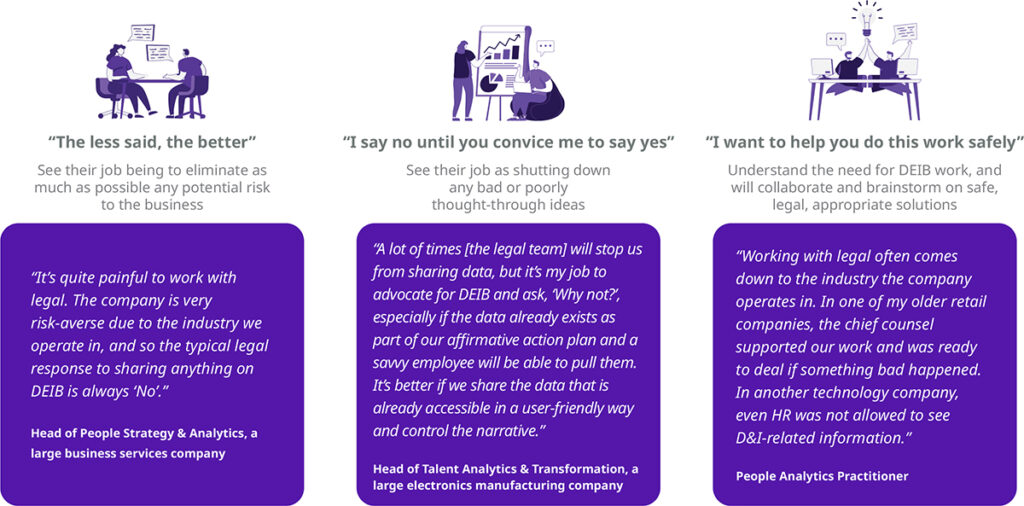
Figure 15: 3 common types of organizational legal & privacy teams | Source: RedThread Research, 2022.
Critical relationship: Business leaders
While the DEIB and PA team may be responsible for driving the quantification and interpretation of DEIB metrics and analysis—business leaders must be involved in this work since they (see Figure 16):
- Influence the practices that impact DEIB
- Need to understand the underlying logic of how DEIB is measured so they can encourage it
- May be held accountable for meeting DEIB metrics
- May be fearful of being held responsible for meeting DEIB metrics
Given this situation, DEIB and PA leaders must work with business leaders to understand their perspectives on the current state of DEIB in their part of the business.
Some business leaders are very interested in making progress on DEIB metrics, while it can be a bit of a “check-the-box” activity for others.
Understanding business leaders’ levels of interest in DEIB metrics is essential, so that the analysis and insights can be tailored to what they care about most. Some of our interviewees worked with those more passionate business leaders and developed truly insightful metrics that business leaders used to drive significant changes.
The point is: The person with the strongest relationship, who is most likely to get the business leader's attention, should lead the conversation.
When determining which team (DEIB or PA) will take the lead with business leaders, the decision will be very organization- and leader-specific. In some organizations, PA has the strong data-focused relationship with the business leaders, so bringing DEIB data into the conversation will be very natural. In others, the DEIB leader has a stronger relationship, so it might make sense for the DEIB leader to begin the conversation and then pull in the PA leader when necessary.
In other situations, it may be that the DEIB and PA leaders work with the senior HRBP, as that person has the relationship with the business leader regarding all “people topics.”
“It’s unlikely that a C-suite leader will come to people analytics with a tactical question. Most often, it’s a strategic question based on a business need. It is up to us to translate that into a research question, find out the answer through data, and translate it back into a data-driven story that provides clarity on the larger strategic issue.”
—Jeremy Shapiro, Executive Director, Workforce Analytics, Merck
Several reasons exist as to why business leaders are integral to DEIB analytics
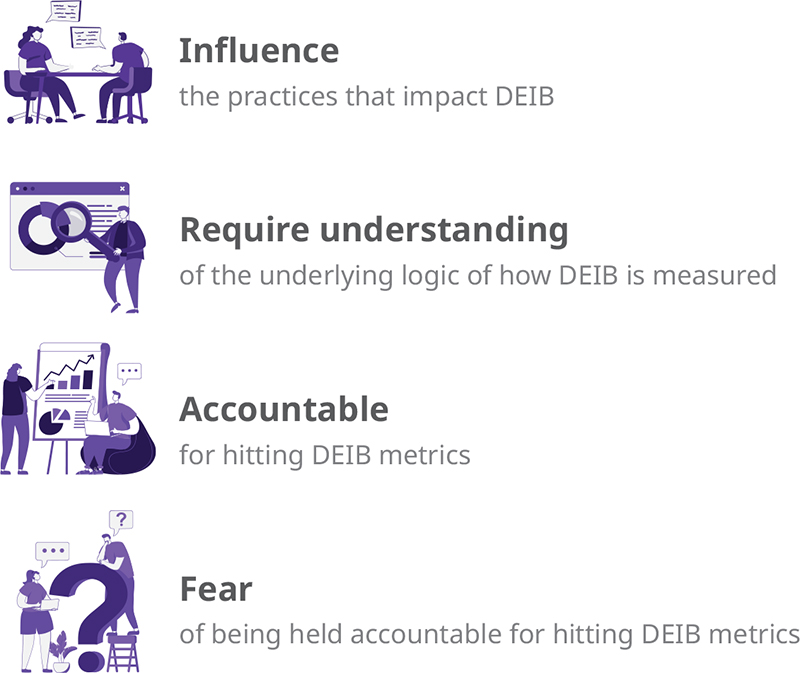
Figure 16: 4 reasons why business leaders are important to DEIB analytics | Source: RedThread Research, 2022.
“There is often a hesitation or reluctance on the leader’s part to open their doors to analytics due to fear that it might reveal some unpleasant findings about their business, which makes it hard to establish a good working relationship.”
—People analytics practitioner
Critical relationship: Compensation & finance
Let’s talk first about the compensation team, as this relationship especially matters when looking at pay equity issues.
Pay equity is one of the more approachable DEIB topics to address—meaning that it’s something the centralized organization can influence directly—and different geographies are enacting laws that require pay equity transparency.
Therefore, many organizations address it relatively early in their DEIB journey.
If DEIB or PA already has a working relationship with the compensation team, then it makes sense for that team to lead.
In terms of the DEIB and PA teams’ relationship with the compensation team, a few critical items of focus include:
- Ensuring the compensation data and other DEIB data are consistent
- Being able to put the results of the pay equity analysis into the context of other DEIB metrics and priorities provided to business leaders
- Collaborating with business leaders, compensation, and finance to determine the highest priority compensation adjustment actions
- Working with compensation and finance to identify and align any metrics that’ll be used in compensation decisions
Again, which group (DEIB or PA) leads the relationship with the compensation team will depend on the existing relationships in place.
Turning to the relationship with finance, it’s almost a certainty that the PA team will have experience working with that team due to their other responsibilities.
However, if neither has such a relationship in place, then it makes sense for PA to lead the discussions—as PA leaders are often already well-versed in compensation technicalities and will probably be able to get to the appropriate analysis faster.
“ We were reporting to the C-suite when the CFO made it clear that they did not see any value in our report. Once we walked them through it, the CFO was amazed at the insights and told us that it was a rich discussion. Once we were able to show the value, they became highly engaged in our work.”
—People analytics practitioner
In this vein, the PA team should (with input from the DEIB team) focus on actions, such as:
- Aligning on critical data sources and ensuring data / analysis consistency
- Showing the financial impact of DEIB when needed
- Putting a monetary value on DEIB events / initiatives
“For our CFO, is gold. He is using people analytics to understand what’s on the horizon and if they can forecast better, based on the human capital data. We actually built a CFO dashboard for him. It’s a great relationship to have because he does not see people analytics as a service function. It’s very much a partnership of equals.”
—Head of global people analytics, multinational consumer products company
Critical relationship: Centralized IT & data operations
Centralized IT and data operations teams are important to the DEIB–PA partnership because they can help:
- Access centrally managed technologies and data
- Identify and provide access to novel data sources
- Troubleshoot technical or data-related difficulties
- Share novel data collection, analysis, and distribution practices
From our interviewees, we heard 2 common challenges when it comes to working with centralized IT and data operations (see Figure 17):
- Trust. Many organizations haven’t historically had a data-led PA or DEIB function, so they’re not accustomed to accommodating requests for access to centralized systems or data. Therefore, requests for support are usually met with suspicion.
Typically, organizations get around this by leveraging senior leaders who can provide a rationale, or by showing the type of work done in the past and how it was used. In addition, providing information on data privacy and security often help.
- Time. Many IT projects were put on hold during the pandemic, and centralized IT and data teams were overwhelmed. Teams have been managing this by reducing project scopes to the most necessary items, finding other resources who could do some of the work, and / or leveraging senior leaders to help with the reprioritization of work.
PA leaders should take the lead—with DEIB’s input—when it comes to driving the relationship with IT and data operations.
The PA team should:
- Share information on how data and technologies will be used to reduce hesitations and fear about data sharing
- Showcase the broader impact of the work on the business overall
- Find additional resources when IT lacks the bandwidth
Time and trust are 2 common challenges experienced by DEIB and PA teams when working with IT and data operations
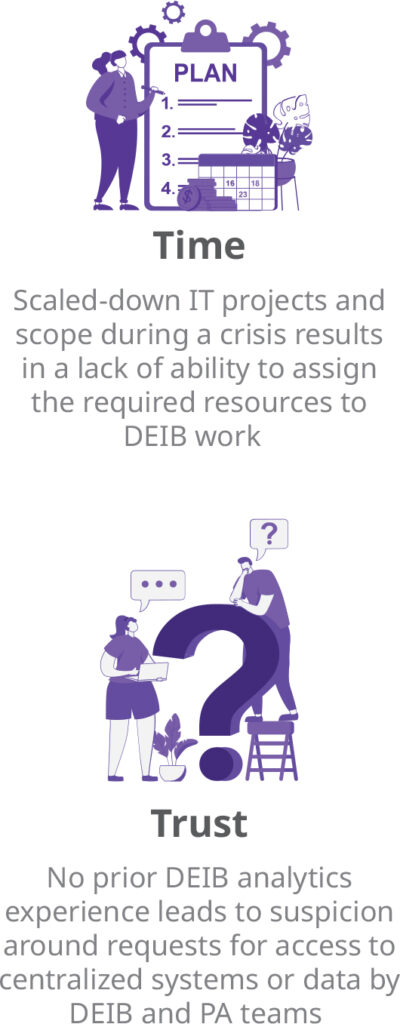
Figure 17: 2 common challenges in working with IT & data operations |Source: RedThread Research, 2022.
Important relationship: Corporate social responsibility
The next set of relationships concerns how DEIB metrics and analytics are shared outside the organization. Many companies include DEIB efforts within their corporate social responsibility (CSR) efforts. As a result, communication with that team on appropriate DEIB metrics—some of which may end up in an annual CSR report—is essential.
But there’s more to it than that. As noted in this article by Dr. Rohini Anand, the well-known former Chief Diversity Officer of Sodexo, DEIB and CSR are often working toward similar goals but from different perspectives:
“… We sometimes approach the same goal from different starting points. Take gender equality. We both want it, but D&I might focus more on recruitment and leadership, whereas CSR might focus more on community empowerment. These can seem like different goals, but they are, in fact, merely different approaches to the same end: improving quality of life.”
To that end, it’s essential for DEIB to take the lead in driving this relationship to understand CSR’s goals, and to align the DEIB metrics and analytics approach to support those goals as much as possible. For many organizations, this relationship will likely build over time, with some initial, relatively “easy” shared metrics at the beginning and more complex metrics with time.
The point is to work across organizational silos and to align on a standard set of measurements and approaches. Without this, CSR and DEIB will look poorly in front of business leaders.
The PA team can serve as a subject matter expert (SME) on the appropriate metrics that’ll serve the purpose of both CSR and DEIB. Also, as the relationship between DEIB and CSR matures, PA can be brought in to identify the next-level or more complex metrics, and how they should be shared.
Real-World Threads
Portland Trail Blazers leverage CSR team to inform community engagement efforts
An example of a successful partnership with the CSR function comes from Portland’s professional basketball team, the Trail Blazers. In 2016, the team’s leadership made a commitment to advance DEI within and outside its organization. The team’s leadership understands that DEI should inform not only their internal culture-building initiatives, but also their external community engagement efforts.
To that end, the organization inaugurated an Equity Team that, over the course of 18 months, convened 7 executive-led strategic planning committees to craft a new approach to their DEI and CSR initiatives.
“Both D&I and CSR, fundamentally, are about reaching out to disenfranchised communities, bringing new market insights to the table, and driving collaborative solutions to business challenges. They are also both skilled at helping the business to understand new, broader definitions of success that will be relevant for the evolving marketplace.”
Important relationship: External communications & marketing
While your organization’s CSR team may share some DEIB metrics externally, it’s fairly certain that your external communications and marketing teams will be very involved in any external communication efforts (see Figure 18).
Some organizations release a dedicated DEIB report that needs to be developed in conjunction with the external communications and marketing teams. Others involve the external communications and / or marketing teams when communicating about DEIB metrics in financial reports or other situations.
While these are very pragmatic ways the DEIB–PA partnership may well engage with the external communications and marketing teams, much more possibility exists in this relationship. These teams:
- Are experts in understanding how to tell stories effectively—meaning they could be beneficial to the DEIB and PA teams as they work to creditably tell stories based on data
- Can share resources that might be useful in communicating about DEIB, such as this Diversity Style Guide
- Can also give some larger context to other critical messaging, both within and outside the organization
The relationships with external communications and marketing can provide DEIB and PA with opportunities to tie some of their own messaging to these more prominent topics. This insight can also serve as a starting point for identifying new data types and analyses that the DEIB and PA teams might want to use in the future.
DEIB should take the lead in working with external communications and marketing teams.
As the “natural” owner of DEIB work, DEIB leaders are responsible for crafting the story and messaging around the insights and how they tie to the broader business goals. On their end, PA leaders should help by:
- Providing DEIB leaders with the insights that shed light on the progress of the organizational goals
- Ensuring that the metrics are interpreted and reported accurately
- Answering questions that arise from the external communications and marketing teams
5 ways external communications and marketing teams can help DEIB and PA teams in their work
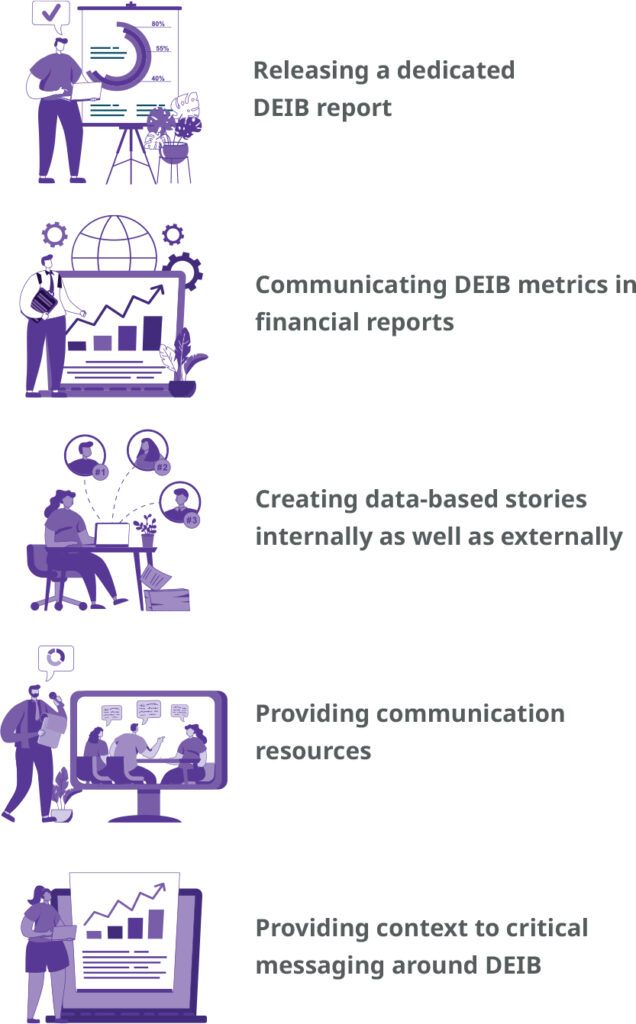
Figure 18: Examples of how external communications & marketing can help DEIB and PA teams | Source: RedThread Research, 2022.
Important relationship: External vendors & consultants
Many organizations turn to external vendors and consultants when they need:
- An external review / perspective on DEIB metrics
- A separate party to do data collection and analysis so as to maintain privacy / independence
- More bandwidth to complete data collection / analysis / recommendations
- Specific expertise / insights
It’s essential to consider whether the external vendor / consultant relationship will be short- or long-term in nature. Due to the sensitivity of the data, this is especially important to consider with DEIB metrics and analytics.
- Shorter-term contracts may mean the DEIB and PA teams limit the data shared to reduce some of the risks to the
- Longer-term relationships may require some additional data privacy and security
In addition, it’s crucial to get the most relevant internal teams aligned on the reason for bringing in the external vendor / consultant and the scope of that party’s work. We’ve heard of way too many instances in which DEIB practitioners brought in external consultants to do DEIB metrics and analytics work without any consultation with the PA team. As a result, the work effort was wasted because the external team lacked adequate data or nuance to interpret the data in a meaningful way.
While DEIB leaders might often find themselves leading the work when it comes to working with external vendors and consultants, DEIB and PA leaders must work together and take equal responsibility.
Given the long-term nature of identifying, measuring, and distributing DEIB metrics, you must have everyone aligned on the work being done and who’s doing it. This is one of the areas in which it makes sense to go slow in moving forward.
“The DEI team hired a vendor for reporting. The team would send the vendor our SAP data and the vendor would send it back to us in some kind of a format that would be used for reporting. Looking back we can see that the numbers and reporting were very inconsistent.”
—Global People Analytics Director, a multinational consumer products company
You should partner closely to make sure:
- The services and technology offered are truly needed, and aren’t already being done in-house or by previously purchased tech
- A plan is in place as to how the data and findings from the consultant will be used
- Clarity exists around who is ultimately responsible for driving and implementing the recommendations and actions that come out of the review and analysis
“I see people analytics departments outsourcing DEIB analysis to external consultants, who will run multivariate regression models and provide independent assurance. The outcome often shows no significant bias. Well, of course, because there is no policy to pay people differently! I wish DEIB leaders would analyze potential bias in all the moments that matter. Then they will really see what’s happening.”
—Dirk Jonker, CEO and Founder, Crunchr
Next steps
Getting started
Now that you’re familiar with the practices required for a successful DEIB–PA partnership, what should you do next?
The 3 practices should be embedded as part of the broader strategy for both PA and DEIB teams. Here, we offer a few steps that you—as a DEIB or PA leader—can start taking immediately.
Step 1: Do a quick audit of where things currently stand between DEIB and PA with the organization. Some of the questions to help you do this include:
- Is there a formal partnership between DEIB and PA within the organization?
- Does leadership support the relationship if it exists?
- How often do DEIB and PA leaders interact or meet?
- Does senior leadership understand and value PA's role in DEIB?
Step 2: Identify the gaps and build on the practices. Determine the areas in the partnership that need attention and which of the 3 practices discussed earlier should be leveraged. Think through the following questions:
- Do DEIB and PA leaders have a clear line of sight into each other's work?
- Is there clarity between the 2 teams regarding responsibilities and expectations?
- Do you have in place an intake process for DEIB requests, data sharing, and communication of insights?
- What other relationships do DEIB and PA teams need to leverage within the organization?
Step 3: Communicate and share broadly the work you are doing together. Sharing your successes and lessons learned within the partnership is essential to supporting each other. Think through the following questions to understand how you can get started:
- How are we currently sharing our work with others in the organization?
- Is our senior leadership aware of our work's impact on the organization?
- Are there external opportunities we can leverage to showcase our work?
- Are we leveraging resources (e.g., community groups and other industry leaders) to get feedback and insights on what else we should be doing?
We also provide a series of exhaustive checklists for each of the 3 practices in the appendix. Use them as a "grab-and-go" list of actions to start building your own successful DEIB analytics partnership.
“There are people who partner with people analytics reluctantly because they need data, and then there are others who want to work with them and use their brain. Diversity leaders should strive to be in the latter group because only then will they gain the insights needed to be successful in their work.”
Chief Diversity Officer, a global retail company
Final thoughts
Over the last 2+ years, many events, trends, and changes have thrust DEIB and PA into the spotlight. While they may be on the stage together, these 2 teams have very different backgrounds and don’t always have the “chemistry” they need. Yet, they must play their respective parts to help organizations through these unprecedented times.
We discovered from our research 3 critical practices which DEIB and PA teams should do to build the kind of partnership that will allow them both to flourish:
- Understand each other’s contexts
- Build a plan for partnering
- Manage the complex organizational network together
By doing these things, PA and DEIB leaders can partner effectively to deliver high-quality DEIB metrics and analysis to their organizations. This partnership will enable organizations to make higher-quality, data-backed decisions that ultimately impact millions of lives.
We strongly encourage you to complement this study with our previous study on DEIB analytics: DEIB Analytics: A Guide to Why & How to Get Started and DEIB Metrics: An Essential Guide. If you still have questions, please reach out. We love to learn from you.
Note: for Appendices, including research methodology, and checklists for getting started please download the PDF report.
Rethinking Connection at Work: A Premise
Posted on Tuesday, July 19th, 2022 at 2:58 PM
Why talk about connection at work?
You've probably heard that connection is important to humans—that we are social creatures. That for our ancestors, social isolation could be deadly.
So you may not be surprised that connection at work is important, too. It may not be a matter of life or death as it was for our ancestors, but feeling connected—to others and to the organization—has a huge effect on employees. Connection typically improves an employee’s experience at work and allows them to do better work.
More specifically, connection at work is critical to things like employee engagement, sense of belonging and well-being, individual performance, collaboration, and innovation:
- Gallup’s research has established a link between employee engagement and having a best friend at work.
- Research in organizational network analysis (ONA)—for example, by Rob Cross and Michael Arena—shows how employee connections affect their teams’ ability to openly share ideas, communicate, and innovate.
- RedThread’s research found that connection has become a critical component of performance management since the pandemic started.
In other words: connection is good for employees and for the organization.
But connection at work isn’t what it used to be.
We’re in a connection crisis
The last few years have upended how people connect at work. First there was a forced, mass move to remote work due to the COVID-19 pandemic. A settling-in to new routines. Then some stop-and-go progress toward hybrid work. All this in an environment of economic uncertainty as well as social and political tension in many places and on many topics.
During the pandemic, professional networks shrunk dramatically—by 16%, according to researchers King and Kovacs. As a result, many people feel less connected to their colleagues and organizations.
This connection crisis is an increasingly hot topic, particularly as research reveals the extent of the problem. We’re seeing an uptick in published articles and discussions about how employees and leaders can (re)build and strengthen connections in their organizations.
As organizations move from pandemic to post-pandemic, we think it’s worth considering how they can not only rebuild relationships that were lost during the pandemic, but establish ways of connecting that will set them up for the future. That’s why we’re launching new research focused on rethinking connection in organizations.
What we’ll research
As we launch this research, our overarching question is:
How can organizations most effectively foster the connections that matter to them?
In particular, we'll be looking at 2 areas:
- The types of connections that matter in organizations
- The ways organizations can enable connection
We think there are more types of connections and more ways to enable connection than are featured in the current conversation. A broader understanding of connection may help organizations more effectively address the connection crisis.
At RedThread, we believe in “doing research out loud” by opening our research process to practitioners across the community. It makes us smarter and helps everyone gather ideas from a wider pool of people. To participate in the roundtable and / or interviews for this and other RedThread research projects, please reach out!
Diversity, Equity, Inclusion & Belonging: Designing for a Post-Pandemic World
Posted on Tuesday, July 12th, 2022 at 6:00 AM
Download This Research[/button]
Organizations still have a long way to go when it comes to DEIB
It's been more than 2 years since the murder of George Floyd. Two years since business leaders published statements promising to address the systemic inequities within their organizations. Two years since organizations began hiring new diversity, equity, inclusion, and belonging (DEIB) leaders, reexamining practices, and investing in new programs and systems. So, what results have we seen?
To date, the results of these actions haven't been great. According to the Edelman Trust Index, most employees under age 54 don't believe that companies are living up to the promises made to address racism within their organization. Further, trust in employers to respond appropriately to systemic racism and racial injustice has declined. As shown in Figure 1, this is particularly the case in populations impacted by racially motivated events, such as the mass shootings of Asians in Atlanta, GA in March 2021, Taiwanese in Laguna Woods, CA in May of 2022, and of Blacks in Buffalo, NY also in May of 2022.

Figure 1: Perceptions of trust among U.S. employees toward their employers | Source: Edelman, 2022.
Though issues of race are the most prevalent at the moment, they're not the only areas for which employees are dissatisfied with their employers’ responses. For example, data from PwC shows that 80% of employees believe their organizations don’t gather and analyze data on compensation, performance, hiring, and promotions discrepancies. Further, nearly 40% of total respondents from a survey of 1,543 workers, the majority of whom identify as Black, Hispanic / Latinx, Asian, female, and LGBTQIA, believe their company’s commitment to DEI is likely to drift in the future.
Even CEOs recognize the problem: According to Deloitte, 41% believe there's a lack of trust around DEI in their organizations.
“The taken-for-granted assumption that one could just get a position of leadership and then behave however one chooses to and get away with it…is not really panning out. The context has changed.”
—Laura Morgan Roberts, Professor, University of Virginia, Darden School of Business
Employees still expect organizations to act
Despite employees’ dissatisfaction with their organizations’ progress over the last few years, they still expect companies to take action on issues of racial injustice. Americans still trust their employers more than any other type of institution to do what's “right” when it comes to racism. Similarly, 66% of Americans think businesses should act on racial injustice issues, while 68% believe people should be able to discuss the topic at work (see Figure 2).

Figure 2: Expectations of employers by employees on racial injustice issues | Source: Paradigm, 2021.
Further, 58% of the U.S. general population indicate that an inclusive work culture with a strong and well-supported diversity program is critically important to attract and retain them. Further, in organizations that have made “a lot” of progress in addressing racism and racial inequities in the workforce, employees have higher levels of loyalty, employer advocacy, and commitment.
The questions this study answers
Given everything that's happened in the last few years, we took a step back and asked a few critical questions:
- What are some of the fundamental shifts we’ve seen related to talent—and how will this impact diversity, equity, inclusion, and belonging (DEIB)?
- What is a holistic way leaders can think about their DEIB efforts, thereby more effectively defining and integrating their DEIB strategy with other activities?
- What trends do we see moving forward that could influence organizations' 2022-2023 strategy?
This study is based on a review of more than 70 articles, and interviews with 10 DEIB leaders and 20 HR leaders.
RedThread's definitions of terms: DEIB
Fundamental shifts
The earthquake beneath the talent landscape is shaking up DEIB expectations
Over the last few years, we’ve seen some tectonic-level shifts in the talent landscape. These include:
- Change in power dynamics in favor of Over the last year, we’ve seen the Great Resignation as well as a massive rebellion when it comes to employees returning to the office (office occupancy rates have plateaued at 43%). Further, the gig marketplace and alternative work arrangements are increasingly attractive to employees, with many opting for those roles in lieu of a corporate job.
- Demand for skills that are in under-supply results in a greater focus on retention, promotion, and talent The last few years’ whiplash-like changes in the business environment have highlighted organizations’ talent deficiencies. Leaders realize they don’t have the skills they need in their existing workforce—and they can't fill their organizations’ demand for skills from the external talent market. Therefore, leaders are focusing on retaining employees and developing them with the skills the company needs.
- Rising importance of human capital For companies, more and more of their business is people-driven, resulting in investors taking a growing interest in human capital metrics. The SEC, for example, is now requiring public companies to report on those metrics—including diversity metrics—in their financial reports.
As a result of these major shifts, leaders could not simply make their 2020 DEIB promises and move on to the next thing (see Figure 3). Instead, they see a situation in which:
- Employees feel empowered to demand change with Nearly 60% of those aged 35-54 and 70% of those aged 18-34 have advocated or acted against racism—and they're carrying those expectations of action into their workplaces. Another 82% of employees expect CEOs to do something to address systemic racism and racial injustice.
- Leaders must respond to employees’ demands to make progress on It’s clear that leaders must address racism or risk losing employees. While 40% of employees would consider leaving their company if they don’t trust it to fulfill its DEI commitments, 56% would not recommend their company as a place to work.
- The public is monitoring progress on With the current SEC requirements to disclose diversity data—and more requirements coming soon—investors, employees, and the media are all holding leaders accountable for moving the needle on DEIB metrics. While some organizations have shared minimal diversity data, it’s unlikely that scenario will remain tenable.
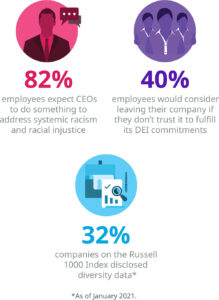
Figure 3: Leaders need to follow through on their DEIB promises | Source: Edelman 2022, Deloitte 2022, Just Capital 2021.
“A role that was once focused on race and gender has grown in complexity and inclusion of individuals spanning military status, special needs, LGBTQ, generations, and more. What was once a focus on workforce (people) now includes workplace (culture) and marketplace (business).”
—Jackson Lee Davis IV, Head of Diversity, Equity, and Inclusion, MassMutual
Real-World Threads
Gentech and Chipotle make DEIB everyone’s job
DEIB isn't the sole responsibility of human resources. In 2019, Genentech CEO Alexander Hardy created the role of chief diversity officer (CDO) and decided it should report directly to him. Additionally, managers of departments are required to complete D&I action plans that are then shared with their teams and, in some cases, the entire company on its intranet. The departmental action plans help create ownership so that it's not just the CDO’s responsibility to drive D&I.
These steps have allowed the company to expand its commitment to D&I beyond hiring and retention, and into every aspect of its business and company culture.
Similarly, at Chipotle the diversity strategy is not seen as a responsibility of one department. The company’s program includes mentorship, virtual roundtables, and quarterly training. For the company, the most effective programming is an ongoing cadence of events that genuinely engage its workforce and features a diverse group of individuals from various departments. It believes that when employees make real connections, it helps cultivate an environment where they can thrive and pursue their passions with like-minded coworkers.
“Prior to the creation of the Chief Diversity Office, our D&I efforts sat within HR. Alexander understood the need for an enterprisewide mindset and a seat at the decision-making table for us to think bolder than representation—and truly advance equity within Genentech’s business.”
A shift within a shift: The rising importance of purpose
An underlying theme of the shift in power dynamics toward employees is their greater desire to align their personal purpose with the purpose of their respective organizations. According to Gartner, as of January 2022, within the U.S. employee population:
- 52% question the purpose of their day-to-day job
- 56% want to contribute more to society
- 65% are rethinking the place work should have in their lives
Leaders increasingly understand the need to identify, articulate, and act on their organization’s purpose. As identified in Figure 4, an organization's purpose is a clear and concise statement that inspires people to deliver value to multiple stakeholders.
An organizational purpose that considers multiple stakeholders—also known as stakeholder capitalism—is not some new-fangled idea that some fringe companies are doing. In fact, the Business Roundtable, an organization comprised of the largest companies in the world, released an updated “Statement on the Purpose of a Corporation” in August 2019.
In this statement, “181 CEOs committed to pursue a more holistic approach to serving stakeholders more broadly renouncing the concept of shareholder primacy.”
Organizational purpose: A clear and concise statement that inspires people to deliver value to multiple stakeholders.
Purposeful organizations focus on the same stakeholder types as DEIB leaders
The focus on purpose has a direct consequence for DEIB efforts, as the multiple types of stakeholders identified by the Business Roundtable (see Figure 5) are the same ones on which DEIB leaders traditionally focus.
This means that DEIB leaders should have more support for their efforts, as organizations try to fulfill the idea of organizational purpose.
But with that broader support also, potentially, come more cooks in the DEIB kitchen—and more scrutiny of DEIB efforts. This makes it more important than ever to have a clear and holistic approach to DEIB.
Developing a holistic approach to DEIB
“This work is about culture and change management, and so we need to be looking for behaviors, practices, or norms that need to change.“
—Mary Ellen Connerty, Director, Diversity & Engagement, O’Melveny & Myers LLP
Creating a holistic DEIB approach
When you’re developing a new DEIB approach—really a DEIB system—you need to answer these 6 questions (see Figure 6):
- Why is my organization focusing on DEIB?
- What goals are we trying to achieve and for whom?
- What is our strategy to achieve those goals?
- What levers are we trying to pull to enable that strategy? What are the supporting activities that pull those levers?
- How will we use technology to scale our operational activities?
- How will we use data, analytics, and metrics to create transparency and enable accountability?
A holistic DEIB system is one in which every organizational process, action, policy, and decision is looked at through a DEIB lens.
Start with your organization’s “why”
There are typically 3 reasons why organizations focus on DEIB:
- Alignment to organizational purpose
- “Right thing to do” (RTTD)
- Business case for D&I
Right now, though, there’s another reason:
Other competing priorities. A recent Deloitte study revealed that majority of senior leaders believe their organizations' commitment to DEIB will take a back seat as other competitive threats surface.
This skepticism of organizations’ commitment to DEIB means it's even more important than ever for organizations to follow through on their commitments.
Making it happen: Understanding the why
When you open the discussion to “why” your organization is supporting DEIB, it's critical to be sensitive to the organization's specific context, environment, and leaders’ perspectives.
Different leaders are at various stages in their journey to understand and embrace DEIB. One of the benefits of the greater openness we’ve seen is that many leaders are now more open to further learning.
Regardless of specific leaders’ perspectives, the important thing is to align on the overall why for the company.
“Begin with why this is important to you. Align it to the long-term value of the firm, the purpose of the firm, and your value system.”
—Mary Slaughter, Former Managing Director, EY
Why: A checklist to jumpstart your efforts
❏ Why are we focusing on DEIB (i.e., alignment to purpose, market / societal expectations, business outcomes)?
❏ How does that reason align with our business strategy?
❏ How does this reason(s) align with our internal talent expectations and our external brand?
❏ What are the specific DEIB changes that impact our organization?
❏ What are senior execs’ experiences with DEIB and how can we use those to align on a vision?
What does your organization want to achieve?
The next big question to answer is what your goals are, both long term and short. Some examples of typical goals we heard are:
- Ensure talent pipeline diversity
- Move the dial on leadership diversity
- Identify barriers to belonging while putting inclusive practices in place
- Enhance representation among middle management
It’s important to be very clear on these goals, and (as we discuss later) to have clear metrics and accountability in place for these goals.
Real-World Threads
TD bank conducts an audit to review internal DEIB policies
Canada’s Toronto-Dominion Bank (TD Bank) has created goals for the company for 2025 to increase the representation of Black, Indigenous, and minorities at the vice-president level or higher. To achieve that, the company began by conducting its first-ever racial equity audit in 2022.
The audit will scrutinize TD’s internal employment practices for racial bias and allow the bank to use its findings to inform future business practices with Black, Indigenous, and other racialized customers. It includes a third-party assessment by an outside law firm and TD staffers' contributions.
The purpose of the audit is to help the bank review its employment policy and understand how it operates. The bank is also committed to applying the lessons learned in its work with customers and communities. While the company started by looking at its operations and employee experience at the bank, its DEIB strategy has expanded to include how it interacts with and serves its customers and communities. The company’s approach to DEIB recognizes the intrinsic link to other dimensions of its business, and the impacts of racial equity on customers and communities.
In addition to focusing on representation, the company also tracks inclusion through an employee experience survey that it reviews from the perspective of different communities to understand the experiences of Black, Indigenous, and underrepresented employees at TD.
“If you don’t have that strong, inclusive culture within your organization, if you don’t have an understanding of how racism and discrimination can manifest—including in the form of microaggressions—then you’re not going to be able to achieve that sustainable progress you want to see.”
—Diana Lee, Vice-President of Diversity and Inclusion, TD Bank
And, for whom?
While it’s important to have high-level goals, you should consider focusing on goals for specific subsets of stakeholders (see Figure 7).
For example, you may have specific goals for C-suite leaders and middle managers, as those groups are critical to making DEIB a reality.
In addition, you may have goals for specific demographic groups, such as gender, race / ethnicity, culture, sexual orientation, social / economic classification, age, disability, and religion.
For the last few years, there’s been a huge focus on both female and Black employees. We expect to see goals around representation and engagement of these populations to continue.

Figure 7: 5 stakeholders of organizations, including DEIB subgroups | Source: RedThread Research, 2022.
Making it happen: Listening for better goal-setting
When setting goals, it's essential for you to understand the range of perceptions and experiences of different stakeholders. This can mean leveraging a range of data sources (e.g., interviews, focus groups, surveys, demographic data, digital exhaust, etc.) to get a holistic picture of current state and gaps.
Recommendations and feedback from diversity councils, resource and affinity groups, people committees, and diversity advocates comprise an integral part of understanding where you stand and where you need to go.
“Every strategy must start with listening. We must veer away from making assumptions on what people need and how they need it, and listening forms a core part of that.” —Sheree Atcheson, former Global Director of Diversity, Equity and Inclusion, Peakon
Goals: A checklist to jumpstart your efforts
❏ Where are we currently?
❏ Where are the existing gaps?
❏ What is the experience of each of our stakeholders in working with our organization?
❏ How frequently are we listening to stakeholders?
❏ Are there specific roles or groups, such as executives or middle managers, whose approach needs to evolve so we can drive change?
❏ What has changed and are we addressing that in our goals?
❏ How will the goals we set align with our business strategy and objectives?
“Understand the business you’re in and figure out how D&I can enhance the bottom line. Such efforts can’t be an HR initiative; they ca be separate from corporate strategy. This is about engaging the entire organization on issues related to diversity.”
What is a strategy anyway?
We have read about a lot of different DEIB “strategies”:
- The 3 Ps: People, partners, and places
- The 4 Pillars: Workforce, workplace, industry, and community
- The 3 Is: Individuals, infrastructure, and impact
While these are useful methods to keep track of all the ways you can operationalize a strategy, they are not a strategy.
Instead, a strategy helps you understand what you should be doing—and, as a result, what you should not be doing—to achieve the established goals.
A DEIB strategy supports the purpose and drives the organizational culture.
Think of it this way: Your strategy to win a marathon may be to go fast the first 13 miles and slow the last 13 miles (and just hope you make it!). Or it could be to go slow the first 20 miles and sprint the last 6.
But a strategy wouldn't be to put on your running shoes, clothes, and drink water! They may be necessary to running the race, but they're not your strategy.
A business strategy is “… a set of guiding principles that, when communicated and adopted in the organization, generates a desired pattern of decision making.” Source: Harvard Business Review, 2007.
So what’s a DEIB strategy then?
A DEIB strategy, similarly, is a set of guiding principles that helps your organization achieve its DEIB goals. The DEIB strategy should help you make decisions about the activities to engage in and those you should forego to achieve your goals.
What does this look like in real life? As an example, let's assume a company’s goal is:
“To be the most inclusive organization in tech.”
Sounds lofty, right? Well, then the strategy could be:
“To create inclusive experiences for employees from their first interaction to their exit interview.”
This strategy clarifies that the organization will focus on all of the talent lifecycle and specifically focus on inclusion (diversity, equity, or belonging may be a secondary focus).
It also gives the organization a set of guidelines for making decisions, for example:
- Is this talent selection process inclusive? Nope? Let’s change
- Is this leadership program inclusive? Kind of. Let’s evolve it.
- Is this event inclusive? Yes! Great, how can we do more of them?
How are DEIB strategies changing now?
We asked every interviewee if their DEIB strategy is changing and the results were mixed.
Organizations that already had a clear strategy indicated they plan to stay the course. These companies have amplified their efforts for Black employees and their communities, but haven't planned significant strategic changes.
"Having a collective strategy around what we’re doing not only to hire the best talent but also to retain talent and develop talent is important. One of the reasons we’re seeing strong results is because of how we’ve treated our people , and a lot of that has been led by HR."
—Cynthia Bowman, Chief Diversity and Inclusion and Talent Acquisition Officer, Bank of America
For those organizations that are relatively early in their DEIB journey, we find are much more likely to indicate they're planning to adjust their strategy. Generally speaking, this means developing a much more explicit focus on inclusion and belonging for Black employees, and a greater level of openness for difficult conversations about racial justice.
" to make sure we’re talking about inclusion and equality at every level, and that it is front and center in the board room and in the management room. We can set hard targets for ourselves and make those transparent to our board and measure them like we measure other outcomes like financial results.”
Strategy vs. goals: What’s the difference?
Once you've set your goals, the next step is to figure out how to achieve them and lay out a strategy for it. You may fall short at this stage as setting goals and objectives is often confused with an actual strategy.
While DEIB goals are what you hope to achieve, a strategy is a specific action plan that will help you get there.
It's critical that you be extremely detailed and descriptive in laying out the specific targets and how you strategically work to achieve them. Unlike goals, which can be both short and long term (1-5 years), a strategy should cover a short-time period (e.g., 1 financial year) and needs to be revisited often.
" You can’t take exactly what someone else is doing, put it in your organization and think it will work. You’re not really focusing on your own culture and diagnosing your own issues. You can learn what others are doing, but you have to figure out what challenges you’re trying to solve for your own company.”
—Monica Jackson, Vice President of Inclusion and Diversity, Eaton
Real-World Threads
Building on progress through conversations at Bank of America
Bank of America’s commitment to DEIB is reflected in its numbers. Its global workforce is half women, and in the U.S., 49% of its workforce are people of color. Half of the company’s board of directors is diverse, and it’s among just 9 S&P companies with at least 6 female board members. In 2021, the bank increased its commitment to racial equality and economic opportunity to $1.25 billion over 5 years.
One of the ways the bank builds on its diversity efforts and advances that success is through its “Let’s Get Real” courageous conversations series. These conversations allow employees to empathize, understand their differences, and contextualize some of the takeaways and lessons. Held across the organization globally, the conversations are led by members of the board, the CEO, most of the management team, multiple employee networks, and many employees who’ve been able to talk about the issues that matter to them.
The conversations cover different topics—intersectionality, mental health, equity, and inclusion—and have helped people check their own biases and reflect on how to be more consciously unbiased. Another area is helping people get comfortable with difficult conversations and providing them with the necessary tools to talk about sometimes difficult topics to drive more conversations around inclusion and equity.
Bank of America encourages its people to be proactive and have deliberate conversations. It wants them to listen to others instead of replying right away, and challenge themselves to see where that person is coming from. The bank encourages people to have authentic conversations.
Making it happen: Refining the strategy
Similar to goal-setting, involve different stakeholders right from the start in refining the strategy.
Incorporate different groups with varied experiences to get their perspectives on how goals can be achieved. Strategy setting should be a highly iterative process.
Our interviews revealed 3 findings crucial to this step:
- Collaborate with business leaders on how the DEIB strategy will work for their business and enable them to achieve their objectives
- Work with HR and other teams, such as talent acquisition, learning and development, and leadership development, to revisit policies and practices to ensure that the strategy is baked into every process
- Using the strategy setting process—and the resulting communications—as a way to get everyone onboard with the actions to come
Strategy: A checklist to jumpstart your efforts
❏ Who needs to be involved in creating the strategy (including middle and frontline managers)?
❏ Do our goals and strategy support each other?
❏ What specific activities will help us achieve those goals?
❏ What practices / policies need to be shifted?
❏ How can we embed DEIB strategy and activities into the business strategy?
❏ Does the strategy align with the overall purpose of the organization?
“Solving DEI&B starts with understanding the human brain and how we relate to one another. If we don't learn how to talk openly about this complex subject, if we don't learn how to spot bias in our own behaviors, and if we don't learn how to act inclusively and have empathy for others, all our procedures in the world won't change our individual experiences.”
—Mary Slaughter, Former Managing Director, EY
Moving on from strategy: Focus first on the levers, not activities
It’s super easy to rush from strategy to specific programs, initiatives, and events. Don’t make this mistake.
Instead, identify the levers your organization most needs to focus on to drive DEIB outcomes (see Figure 8). This allows you to be more purposeful about your organization's DEIB activities.
For some goals, it may be best to focus on some of the levers, while, for others, you might want to influence all of them.
For example, if your organization’s challenge is senior leaders' support, then you might want to focus on understanding those leaders’ individual beliefs / behaviors, and making low-risk policy or program changes. If, instead, your challenge is middle-manager support, then you might focus on understanding those leaders’ beliefs and behaviors, but also tackle driving changes in all other areas, too.
Select DEIB activities based on levers
Once you’re clear on the levers you're trying to influence, then identify the activities that could be appropriate. Figure 9 offers an example list of activities that impact DEIB levers. This list is not exhaustive. You should build out your own list—and adjust your assessment of the extent to which the activities influence the levers for your organization.
Generally speaking, it's better to have activities that influence multiple levers. That said, a specific talent activity may serve an important purpose for a single lever.
For example, a statement on the organization’s perspective regarding racial injustice during the summer of 2020 was incredibly important. However, since it only influences one of the levers, it needed to be backed up with other activities that can impact DEIB outcomes.
Real-World Threads
DoorDash promotes internal talent through its “Elevate” program
In early 2019, DoorDash, the food-delivery startup, implemented a DEIB program, Elevate, an internal sponsorship project designed to help advance the careers of women of color.
Because the executive team was already convinced about the need for such a program, leadership buy-in was quick. However, the program founders spent significant time educating leaders on the differences between mentorship and sponsorship. Specifically, they clarified that managers may offer support, training, advice, and coaching as part of mentorship, but a sponsor should also be an active advocate.
The program is designed for women of color who aspire to hold leadership positions. Participants (called fellows) receive sponsorship from senior management for 6 months. The fellows engage in several activities throughout the program, including attending:
- One-on-one coaching sessions with an external executive coach
- Executive sponsor meetings with company directors and C-suite members
- Career workshops
- Leadership team meetings
The activities aim to help them gain visibility, understand the language leaders speak at that level, and widen their network.
To track success, the company runs surveys before and after each program iteration. The surveys measure satisfaction rates for participants, including what they thought of the coaching and their sponsor. It also tracks retention and promotions of attendees, as well as internal mobility.
After 3 cohorts, Elevate has shown signs of success.
Within 6 months of completing the program, 38% of fellows earned promotions, a significant increase as compared with their non-Elevate peers. Additionally, 20% of alumni took lateral steps within the company.
“Rather than just focus on recruiting and getting more senior women of color externally, we wanted to focus on investing in talent internally.”
—Bie Aweh, Senior Learning and Development Manager For Women, Non-Binary and Underrepresented Talent Development,DoorDash
Making it happen: Enabling levers & activities
While strategy may be set by a subset of leaders, it comes to life through everyone. Therefore, it's essential for you to share details of the strategy throughout the organization and to distribute the authority to act on it broadly.
This means that once the influential levers and activities have been identified, you must provide tools, resources, and empowerment for everyone in the organization to take action.
Levers & activities: A checklist to jumpstart your efforts
❏ How do we enable action at every level?
❏ Who is responsible for which parts of the strategy?
❏ Have we clarified what decision-making rights leaders have?
❏ What role does everyone need to play?
❏ How can we enable individuals at all levels to drive DEIB?
❏ What tools and resources do people need to implement the strategy effectively?
Tech: The great scaler
For a long time, the combination of technology and DEIB—beyond training and ensuring accessibility—wasn't a thought that crossed most DEIB leaders’ minds.
That has changed. In our initial report from February 2019, Diversity & Inclusion Technology: The Rise of a Transformative Market, we identified 89 vendors in the space. In our most recent report on DEIB technology, we identified more than 100 vendors that offer solutions across all parts of the talent lifecycle.
As in so many other areas, DEIB tech can dramatically expand the scale and impact of your DEIB activities. However, just as with any technology implementation, it's essential that you have all other critical decisions—your “why,” goals, strategy, and levers / activities—made before you select any tech. Otherwise, you could be selecting technology that will scale your efforts … in the wrong way.
Before implementing any new technology, you should analyze your existing tech for biases that may exist either within the systems themselves or in how they're used. Then apply that same criteria to any new tech you may implement.
“DEIB technology is enterprise software that provides insights or alters processes or practices, at the individual or organizational level, in support of an organization's efforts to become more diverse, equitable, inclusive, and to enable belonging.”
Source: RedThread Research, 2021.
DEIB tech: You may already have it
When we think about DEIB tech, there are 3 types of vendors:
- “DEIB Focus” vendors: These vendors’ primary business is helping organizations address their D&I An example of this is a vendor whose product focuses only on reducing unconscious bias during hiring.
- “DEIB Feature” vendors: These vendors offer features or functionalities that cater specifically to D&I needs, but their primary business includes more than D&I. An example of this is a recruiting software vendor whose product can make all resume names / identifying information “blind” to minimize unconscious bias.
- “DEIB Friendly” vendors: These vendors do not address D&I as their primary focus, and they don't market themselves specifically as doing so—but their features or functionalities could positively impact diversity and inclusion in organizations. An example of this is a recruiting software vendor that uses artificial intelligence (AI) to recommend appropriate candidates to hiring managers.
It’s important to understand these differences because they can emphasize that your organization may already have technology—a “Feature” or “Friendly” tech—which can be leveraged for DEIB purposes.
Critically, many vendors have added DEIB features to their offerings (see Figure 10) in the last 2 years, making it more likely than ever that your existing tech already has some capabilities in this area.
After reviewing your existing technology, if you don't have a way to scale your strategy and activities, then consider some of the DEIB Focus technologies that may help you achieve your goals. Our DEIB tech research can help you find solutions.
Making it happen: Using tech to drive impact
One of the biggest benefits of technology is that it can help identify insights which either have been missed or considered too politically sensitive to surface. By tracking, measuring, and analyzing actions and behaviors, tech can highlight biases that otherwise wouldn't be discussed.
71% of people believe business leaders are incapable of recognizing racism around them.
Technology: A checklist to jumpstart your efforts
❏ What technology do we currently have that can be leveraged for DEIB purposes?
❏ How can we leverage tech to raise awareness among people on issues around DEIB?
❏ Which technologies do we need to add to help us meet our goals?
❏ Are there certain technologies that we need to get rid of?
“It’s my responsibility as the CEO of this company to make sure it doesn’t fall off the agenda. I think by setting goals for ourselves in the short, medium, and long term, we can then hold ourselves accountable. And I expect the GM team to hold me accountable.”
Data: Creating transparency & enabling accountability
One of the biggest shifts we’ve seen is a higher level of focus on identifying, analyzing, and democratizing DEIB data.
- Identifying DEIB data: While organizations have tracked diversity data for compliance reasons for years, the focus has shifted more broadly. Organizations are now trying to understand the employee experience for diverse populations and how that differs from the majority We’re also hearing about organizations seeking more forward-looking metrics—not just pipeline or representation metrics, which are backward-looking.
- Analyzing DEIB data: Historically, given the perceived sensitivity of this data, the analysis and reporting of DEIB data have been done by a small group of The recent proliferation of data technologies has expanded the groups that can access and analyze these data, making it more likely to be done.
- Democratizing DEIB data: Given higher expectations from employees and other stakeholders, organizations are sharing more data on DEIB than The key will be in ensuring accountability for changes, which is a responsibility of both organizational leaders and stakeholders.
Real-World Threads
Accountability at Bank of America
Bank of America continues to make progress on its commitment to DEIB due to the support provided by its Global D&I Council, which is chaired by the bank’s CEO. The council comprises several senior executives across businesses and regions. The CEO attends every session. The council helps set priorities and hold the bank accountable to drive progress. Additionally, the bank’s board and CEO oversee culture, and hold the organization and DEI team accountable for their work to support internal talent and address societal issues.
The progress is reflected in the bank’s Human Capital Management Report, which shows that the progress for underrepresented groups is largely due to their accountability and governance structure. In addition to making progress in the gender diversity in its global workforce, It's closing gaps at senior levels and management teams are significantly diverse. Currently, 3 out of 8 business lines at the bank are women-led.
Real-World Threads
Intel promotes DEIB transparency and accountability
Since 2015, Intel has publicly shared percentages around its D&I data as part of its environmental, social, and governance (ESG) work. Further, in 2019, Intel made its pay data public and announced that it had achieved gender pay equity globally and race / ethnicity pay equity in the U.S. In 2022, Intel decided to go a step further and share raw data in addition to the percentages in its reports.
This level of transparency for Intel has resulted in increased accountability and a desire to do better when achieving its DEIB goals. The results are indicative of the efforts.
In 2020, the company had 1,250 women and 380 underrepresented minorities (URMs) in senior leadership roles. The company’s target for 2021 was to reach 1,375 women in senior leadership. It surpassed its goal by 74, ending the year with 1,449 women in senior leadership roles across the globe. The U.S. URM numbers for senior leadership roles also increased to 444.
Even though the company continues to push its efforts, it has witnessed a drop in some places. For example, it saw a decline in technical roles held by women from 25.2% in 2020 to 24.3% in 2021. The company has set goals to exceed 40% representation of women in technical positions by 2030. To achieve this, the company will be implementing targeted programs to increase the number of women hired for technician, engineering hardware, and software roles through sourcing, pipelining, and workforce development initiatives.
The company aims to increase the representation of Black / African American employees in senior, director, and executive-level roles in the U.S. workforce by 10% by the end of 2022. It also plans to achieve 30% female representation in technical entry-level hires and $1.4 billion in annual spending with diverse suppliers.
"We are looking at being transparent and holding ourselves accountable like we want our employees and the industry to hold us accountable. We're taking this year to reassess and ensure that our Corporate Social Responsibility (CSR) work is truly forward-thinking and will get us to a great place by 2030."
—Dawn Jones, Chief Diversity and Inclusion Officer and Vice President of Social Impact, Intel
Making it happen: Data, analytics & metrics
Many companies can fall into the trap of “check the box,” for which DEIB efforts become something you have to do because it's required. By tying efforts to actual metrics that are reported and connected to potential rewards, you can embed accountability.
Additionally, establishing metrics that can be tracked consistently might be one of the most crucial steps you can take in the process.
“In every organization, there is a need for a set of standardized metrics that can be applied across the business, and customized metrics that are specific to each business, to ensure equitable measurement.
—Crysta Dungee, DEI leader
Data, analytics & metrics: A checklist to jumpstart your efforts
❏ What data will help us understand if we're making progress toward our goals?
❏ Do we have both forward-looking and backward-looking goals? How can that data be consolidated into 3–7 metrics we can track consistently?
❏ Which metrics can be connected to either carrots or sticks to drive accountability?
❏ And for whom? What data / results must we share with everyone?
❏ What other data / results should we share with other audiences?
❏ How often must we share that data with those stakeholders?
“If we want to make change, we have to have a target and accountability. If is important, we attach a number and a timeline to see if we’re making progress on that.”
—SVP, Head of People Sustainability and Chief D&I Officer, Technology company
Trends for 2022 & 2023
Trend #1—Ensuring return to office isn’t return to 2019
One of the most remarkable sets of data from the last few years compares the return-to-office preferences of different demographic groups. As shown in Figure 11, most underrepresented populations prefer to be in the office much less frequently than their white colleagues.

Figure 11: Percentage of U.S respondents who prefer a hybrid or fully remote work arrangement | Source: Future Forum Pulse, 2022.
Qualitative research reveals that one of the primary reasons for this is the significant reduction in microaggressions and other types of harassment when employees worked remotely. As employees are in the office more regularly, leaders need to be aware of this issue, and implement workplace practices, behaviors, education, and resources to mitigate it.
There's also the topic of employees who return to the office much less often, as they require the flexibility they've found over the last several years. Research shows that, among knowledge workers, underrepresented populations desire flexibility much more than other populations.
This is also the case for working parents, for whom 57% of working mothers and 48% of working fathers want to work remotely 3-5 days per week (see Figure 12). However, the same research shows many working parents (46%) fear that working remotely will negatively affect their career trajectory (as compared with just 34% of nonparents).

Figure 12: Percentage of working parents (knowledge workers) who want to work remotely 3–5 days a week | Source: Future Forum Pulse, 2022.
As leaders look to adjust their return-to-office policies, they should consider (if they haven't already) how they'll design their talent practices to minimize the impact of proximity bias. This is especially important since it appears underrepresented populations may take more advantage of flexible work arrangements.
Approaches, such as the following, can go a long way in addressing this issue:
- Analysis of performance scores or promotions by in-office time
- Ensuring every employee has a career conversation
- Making access to information about development and promotions more transparent
Trend #2—Auditing existing talent practices and technologies through a DEIB lens
Due to the events of the last 2 years, organizations have a higher level of insight into the challenges of underrepresented populations. Many DEIB-specific resources have been launched to help address these challenges, such as employee resource groups (ERGs), hiring a DEIB leader, and providing DEIB training.
While helpful, these approaches don’t address systemic bias. To do this, leaders need to look at their talent systems—their practices and technologies. Figure 13 highlights DEIB-related practices that U.S. employees believe would help their companies’ long-term success while also benefiting DEIB.

Figure 13: Perception of whether the following DEIB-related policies have a positive impact on a company’s long-term success | Source: Just Capital, 2022.
One of the most important places to start looking is where critical talent decisions are made—hiring and advancement. Analyzing those talent processes for potential biases is a really good place to start. For example, one organization we’ve spoken with has put in place a “candidate advocate” on interview and promotion panels to listen specifically for potentially biased comments (e.g., “She’s got a young kid at home, so she probably doesn’t want this opportunity.”). Other standard practices include having diverse hiring / promotion panel slates.
Another area many companies are focused on today is pay equity. Many organizations can help companies analyze existing pay practices and plan for appropriate adjustments.
Trend #3—The increasing importance of DEIB metrics
We define DEIB metrics as:
Metrics that help leaders analyze and monitor the state of diversity, equity, inclusion, and belonging within the organization.
As alluded to earlier, DEIB metrics are increasingly required by investors, customers, and candidates. It's important to note that we'll soon see more required disclosures from the SEC, which will heighten the need to produce high-quality DEIB metrics.
However, external disclosures are not the only reason to focus on DEIB metrics. Instead, organizations should provide DEIB metrics, along with a straightforward narrative around them (especially around why they may not be able to change as fast as some desire), to dispel rumors and distrust within organizations. As shown in Figure 14, a substantial percentage of employees don't trust colleagues to tell them the truth about racism, diversity, equity, and inclusion in the organization.

Figure 14: Percentage of employees who trust other individuals to tell them the truth about racism, diversity, equity & inclusion within their organization | Source: Edelman, 2022.
Part of the reason for the lack of trust is this: Companies can appear to be “cherry-picking” the specific metrics they share. As shown in Figure 15, some metrics, such as board data disclosures and overall workforce diversity numbers, are commonly reported by companies. However, some of the metrics which could potentially cast companies in a more negative light, such as racial / ethnic pay ratio or diversity targets by race / ethnicity, are less reported upon.
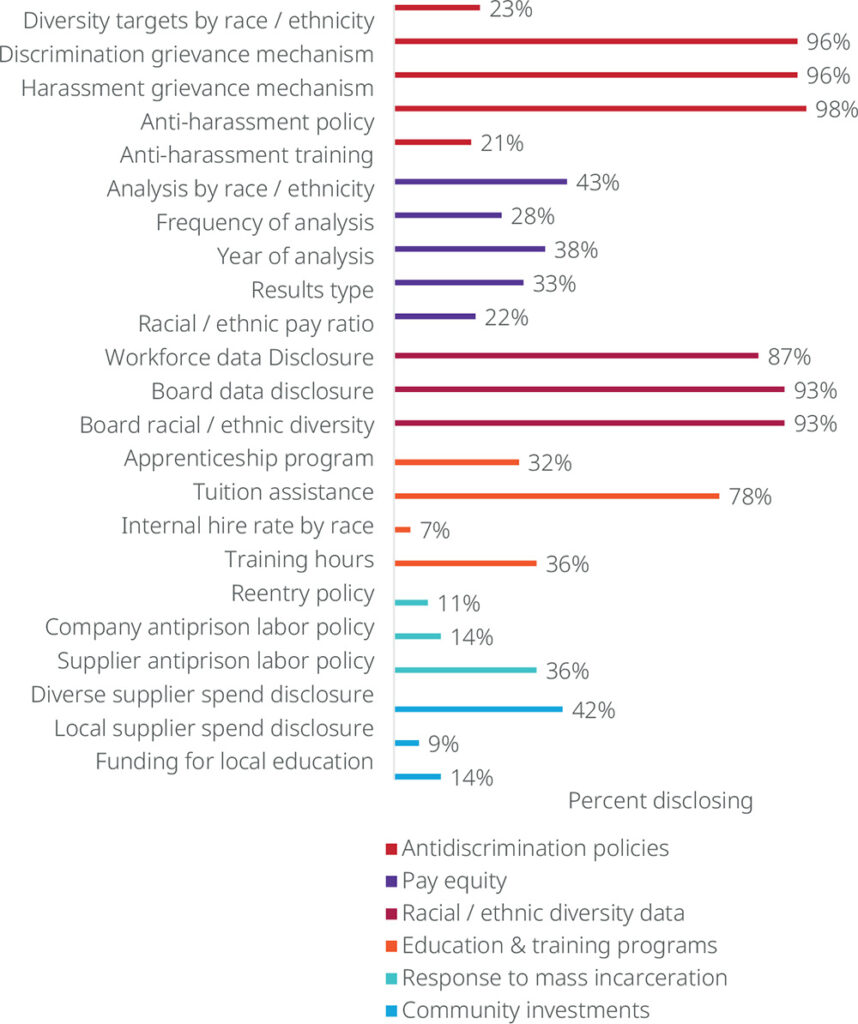
Figure 15: Percentage of America’s largest employers addressing racial equity in 2022, by metric | Source: Just Capital, 2022.
As we all know, providing metrics around DEIB won’t necessarily change everyone’s mind. However, by being clear about where the organization is on DEIB and why specific metrics are being shared versus others, leaders can start to build trust with employees. Over time, regular disclosures of metrics—and improving those metrics—can strengthen employees’ trust in this topic.
Conclusion
The time is now for DEIB leadership
Here & now
The last few years created a unique set of conditions that made people, organizations, and society more open to making meaningful changes to diversity, equity, inclusion, and belonging than ever before.
Create a holistic DEIB system
While it remains crucial that you create DEIB strategies aligned to specific needs, you also need to create alignment across the entire DEIB system— from “why” the organization focuses on DEIB down to leaders’ data, analytics, and metrics. This will create a much more cohesive and stronger system to support DEIB.
Be prepared
Our research indicates that organizations need—and employees demand—to take action on DEIB. By creating an aligned DEIB system (see Figure 16), your organization will be better prepared to tackle whatever comes next.
Update: Visier Gets in the Collaboration Analytics Market with Yva.ai Purchase
Posted on Tuesday, May 31st, 2022 at 1:21 PM
Update: We published this blog in early May when news of Visier’s acquisition of the assets of Yva.ai was announced. We were recently briefed by Visier leaders on the acquisition, and we had the chance to ask the questions we had originally laid out in the blog. We have republished this blog along with the responses. If you have already read this blog and would like to skip to the updates, please scroll down to the last section.
Last week, Visier announced its acquisition of the assets of Yva.ai (pronounced ee-vah, like the alien robot in Wall-E), an AI-driven collaboration analytics vendor. This is interesting news in our space because of what it says about:
- The shifting use cases in the PAT market
- The rising importance of continuous, passive data analytics
- The continued consolidation of people analytics tech
This blog took a little while longer to write than usual because there’s a lot to say about these two different technologies and the shifts within the market. In the below, we cover the following:
- Overview of Visier and Yva.ai
- Background on Multi-source Analysis Platforms (MSAPs) and shifting people analytics tech use cases
- What is a collaboration analytics tool?
- What is Yva.ai?
- Why did Visier acquire the assets of Yva.ai?
If you aren’t looking for any background on the space, feel free to skip bullets 2 and 3.
Overview of Visier and Yva.ai
Let’s begin with a quick review of who is who (see Figure 1). Visier is what we call a “multi-source analysis platform” (MSAP), meaning it connects data from existing HR systems (e.g., HRIS, LMS / LXP, TM) and other operational systems (e.g., sales or customer data) and enables robust analysis and distribution. Yva.ai is a collaboration analytics tool that combines data from corporate tools, such as Microsoft Office 365 and Microsoft Teams, Zoom, Slack, and other collaboration tools, and enhances it with weekly sourced peer-to-peer feedback.
Background on Multi-source Analysis Platforms (MSAPs)
Before we get to more specifics on Visier and Yva.ai, let’s first talk about what MSAPs are and their current opportunities and limitations. As mentioned above, MSAPs allow companies to integrate data from existing HR and other operational systems, analyze that data, and distribute insights about it at appropriate levels of security throughout the organization. These insights are used by people analytics and HR leaders, and, increasingly by business leaders, managers, and individual employees.
There is an incredible amount of power in this type of system. By bringing together disparate data, these systems can create a single, integrated source of data truth, which can then be used to answer critical questions about what is happening with the workforce. Our research shows that effectively using integrated people analytics data can help impact businesses in terms of millions and sometimes billions of dollars, as we wrote about in our report, Unlocking the Hidden C-suite Superpower: People Analytics. These types of significant business outcomes are typically the result of people analytics teams working to help answer strategic business questions, with the support of the CHRO and senior business leaders, who make the final decision.
Yet, the people analytics team is only so big in any organization and can only answer so many questions themselves. By putting data into the hands of more business leaders, managers, and employees, organizations could enable more people to make better, data-backed decisions about people, and thus better enable those organizations (and people!) to thrive. This is the dream that many of us in people analytics have for the future.
Shifting PAT Use Cases
Putting data in the hands of the masses is not just a dream for vendors – in fact, it is a necessity for their future. As shown in Figure 2 (a sneak peek into next week’s release of the People Analytics Tech study), we’ve found that the use cases for people analytics tech are changing. Specifically, as people analytics teams increase in sophistication, they use vendors – especially MSAPs – to integrate increasingly complex data. At some point, though, some of the people analytics teams will take this holistic, integrated data set out of the multi-source analysis platform and put it into a centralized data lake, doing less of their work in the platform. This allows those PA teams to do more sophisticated research and analysis.
Yet, that doesn’t mean MSAPs are no longer important – in fact, it is just the opposite. This is when these systems can become the most valuable. As the data become richer and more continuous (meaning they change and update on a continuous basis), they have increased value in terms of helping business leaders, managers, and employees make better decisions. MSAPs are superb at scaling and sharing data and insights across complex enterprises. Further, given the time that it takes organizations to adopt new technologies, it is just at this point (between Phase 2 and Phase 3 in Figure 2) that these technologies start to be adopted at the scale necessary to drive meaningful insights across the business.
However, for MSAPs, there is a stumbling block in achieving this dream of ubiquitous use: The data these systems integrate often doesn’t change frequently enough to entice senior business leaders, managers, or individual employees to want to look at it continuously (e.g., daily). (Sorry friends, I know some of you will disagree. However, our research shows that 17% and 8% of MSAPs are accessed daily by people managers and employees, respectively. And, to be honest, I think there might be some inflation in those numbers.)
This is not the fault of these solutions. It is, instead, due to the nature of the data they pull in; for example, promotions only happen a few times per year, engagement data are still only collected annually or semi-annually in many organizations, and learning data may not be as robust or relevant as everyone hopes. This is a problem that MSAPs must solve if they are going to get to the next level of adoption across their non-HR / people analytics end users.
And so, with that understanding of what is happening for MSAPs, let’s turn to the other partner in this acquisition: Yva.ai, a collaboration analytics tool.
What is a collaboration analytics tool?
A collaboration analytics tool allows leaders to bring together passive data that are generated through employees’ daily interactions with each other – think Microsoft Office 365 and Microsoft Teams, Zoom, Slack, and other collaboration tools – and generate insights from those data.
There are some real benefits to these types of tools. For example,
- Analysis of these data can be highly predictive of burnout, turnover, etc., so this can help leaders identify and address challenges earlier
- These data do not have to be collected actively (e.g., via a survey), so employees don’t have to be disturbed / leaders don’t have to wait to ask employees how they are doing
- These data can be delivered back to employees to give them heightened self-awareness
Yet, as you can imagine, there are also some concerns with these types of tools:
- There may be concerns of “Big Brother” monitoring, which can erode trust, if it is not made clear what data are being collected and analyzed. Many tools require employees to opt in – not opt out – which can help address this concern. Also, companies can control the level at which data are reported, so information isn’t necessarily tied to individual employees.(Note: We wrote separately about some of these issues in this blog about Cultivate when it was acquired by Perceptyx.)
- Managers may not use these insights appropriately if they don’t understand that they are predictions, not certainties. Further, some managers may use this information to target specific individuals if they already suspect that they are planning to leave. This can be addressed by controlling the level at which managers can receive these data / insights (e.g., not reporting on fewer than 5 employees) or rolling these capabilities out slowly so as to train / enable managers appropriately.
Despite these concerns, it is important to recognize that using collaboration analytics will increasingly become the norm, especially in locales not restricted by GDPR. There is simply so much power in these data that it is unlikely they will remain ignored for much longer.
What is Yva.ai?
Yva.ai is a collaboration analytics tool and was a spinoff from ABBYY, an AI company that helps customers with their digital transformations. Until last week, Yva.ai focused on helping customers understand employee dissatisfaction by combining active and passive employee data and using it to understand employee well-being. It also uses AI models to help companies predict resignations and address the issues that might be driving them.
Some of the differentiators for Yva.ai include:
- Helps companies avoid employee resignation by detecting and addressing burnout early
- Predicts employee resignations within a week with 94.5% accuracy, within 5 weeks with 88% accuracy, and within 3-6 months with 70% accuracy
- Combines active data collected from weekly micro surveys with passive collaboration data
- Enhanced data security for passive data analysis that only looks for semantic signals and destroys the contents after analyses
- Offers smart feedback capabilities: The system can identify employees who should be asked about whom and when, based on passive data collection
When we conducted our review of Yva.ai a few months ago, some of the things that most excited us about the tool included:
- Personal dashboards for employees based on data collected on and from them that allows them to compare their data against organizational level data and share insights with others
- The increased focus on data anonymization, employee privacy, and security by aggregating data, allowing employees to opt-in and opt-out of data collection when they want, and ensuring customers either self-host their data on the cloud or on-premise
- Additional frequent listening capabilities through pulses and micro surveys for companies that only have annual or quarterly engagement surveys
Finally, a few other things of note about the company:
- Organizational network analysis capabilities allow understanding of who works with whom across office collaboration tools such as Slack, Teams, Jira, etc.
- Natural Language Processing (NLP) capabilities to analyze anonymized text data collected from office collaboration tools such as Slack, Teams, Jira, etc.
- Diversity metrics are built-in as a core module, available throughout the entire platform
- Smallest unit at which it reports data is a group of 5 individuals
Why did Visier acquire the assets of Yva.ai?
The primary reasons Visier bought the assets of Yva.ai include:
- The ability to connect what people are doing to outcomes
- The creation of sticky, continuous insights for non-HR / people analytics users
- The underlying AI and NLP technology
Connecting how work is done to outcomes
The headline reason for this acquisition is that it will allow Visier to connect insights on how people are working to the outcomes they produce. This should allow companies to better understand their employees and make better decisions. As Visier CEO Ryan Wong stated:
“Collaboration analytics reveals new insights into how people and teams work together. It enables us to go from understanding “who” and “what” to answering questions about “how” people work best… Now, our customers will have a 360-degree view of what their employees do, how they feel and how they work together. The Visier People Cloud’s outcome-focused insights give leaders the guidance they need to make better decisions. Ultimately, it’s our belief that the companies that best understand their employees will be the ones that thrive in the future of work.”
Creation of sticky, continuous insights for non-HR / people analytics users
As mentioned above, many MSAPs are looking to engage non-HR / people analytics leaders more. The acquisition of a tool like Yva.ai helps Visier address this challenge. Collaboration data can tell users something meaningful about their workforce (or themselves) on a daily (or weekly basis). Again, CEO Ryan Wong identified this as a primary objective for the acquisition
“Leaders can use this combination of active and passive listening capabilities to gain deeper insight beyond individual workers and focus on relationships within networks of people, and the overall wellness of their teams. With this knowledge, managers gain a better understanding of team dynamics and employee well-being. But beyond the leadership benefits, these insights also empower every worker. Employees can gain a deeper understanding of where they are spending their time and who they are working with, and uncover pathways to improving their interactions, collaboration and performance.”
The underlying AI and NLP technology
Yva.ai has some of the most sophisticated AI and NLP technology available on the market right now. With the vast amounts of data available at its disposal, Visier will certainly find interesting ways to deploy that technology. Our hope is that they will use it to simplify the process of finding insights for business leaders, people managers, and employees.
Additional thoughts
One of the interesting things about this deal is that it is an acquisition of the assets of Yva.ai, not of the company as an entire entity. This is typically a strategy acquiring companies use to reduce risk and potential losses, as it enables them to cherry-pick which parts of the company they want, often leaving undesirable portions (like liabilities). We don’t know why Visier chose this approach as opposed to a traditional acquisition strategy.
One of the implications of an asset acquisition, though, is that Visier did not automatically bring over all the employees from Yva.ai. They did, however, hire more than 30 Yva.ai engineers and data scientists, the majority of its global workforce. This additional headcount should strengthen Visier’s tech capabilities, in a time when it is really hard to hire engineers.
Some of the questions we have about this acquisition are:
- Cultures: This is Visier’s first acquisition, so it is just building its muscle at integrating outside technology and teams into its organization. This deal will bring in a portion of the Yva.ai team, many of whom have been working at the cutting edge of AI and machine learning technology, and in different locales than Vancouver-based Visier. There may be a very different set of cultural expectations between these teams. Update, based on 5/26 briefing: Given the fact that a large portion of the Yva.ai team will now be part of Visier, we were curious to understand how the cross-fertilization of backgrounds, expertise, and cultures would work. The short answer is that it will be done gradually and in a natural and organic way. Visier will be relocating more than 30 Yva.ai engineers and scientists to Vancouver and expects the alignment to happen easily because of the similar cultural mindset of the companies and common background of focusing on product innovation. Another reason they expect this cultural integration to happen easily is because of the alignment between the companies on the vision. As a people analytics solution, Yva.ai had helped companies identify and address burnout and improve employee well-being through collaboration analytics. Visier also believes that these issues are topical and highly relevant to getting work done. As a company focused on helping customers solve challenges around hiring, retention, and DEIB, among others, topics of burnout and well-being fit nicely into the fold and will provide additional value to their customers. We look forward to seeing new use cases and the new capabilities in action.
- Leadership: It’s not clear what role Yva.ai’s CEO, David Yang, will have within Visier. However, he has clearly been the visionary behind Yva.ai’s tech, and we wonder what will happen to that vision and Yva’s execution capabilities if he leaves or does not remain in a position of product leadership. Update, based on 5/26 briefing: For now, we were told, David will assume the role of a principal, reporting up to Visier’s CEO, Ryan Wong, and will continue working on the innovation side of things. As we mentioned above there is a lot of alignment between David’s vision and what Visier wants to enable its customers to do. Like Yva.ai, Visier believes in the power of using active and passive data to identify and solve problems quickly. Through Visier, Yva.ai’s technology will be easily available to a wider set of bigger-sized customers who are already familiar with the benefits of people analytics and might be more readily open to passive data collection. As Visier works to integrate the new technology into its own products and offerings, we foresee David to continue playing an important role in the product development for now.
- Data privacy and ethics: Traditionally, Yva.ai has used an opt-in model for its data. We wonder how that will work as Visier tries to tie those data to the rest of its data – and what happens to them if / when employees opt out. And how that then impacts the value proposition for business leaders and people managers? Update, based on 5/26 briefing: Visier acknowledged that this is a complex issue, especially because Visier, being a champion of democratizing insights, has plans to share insights on data collected from employees back with them. The company will work to figure out issues of consent around data collection and the different legal requirement in different regions. Ultimately, we were told, customers will have to make the decision around privacy themselves, but Visier will provide guidance on best practices.
Moving forward
The collaboration analysis tool market will continue to grow as more companies realize the power of data they are already sitting on and become more accustomed to using it. That said, we expect to see many of the vendors in this space entering into partnership agreements or getting purchased, as these data and the associated analysis are fundamentally more powerful if they are connected to other types of data. Therefore, expect to see some action with some of the other vendors in this space such as Glickon, Network Perspective, RSquared, Swoop Analytics, and Worklytics.

